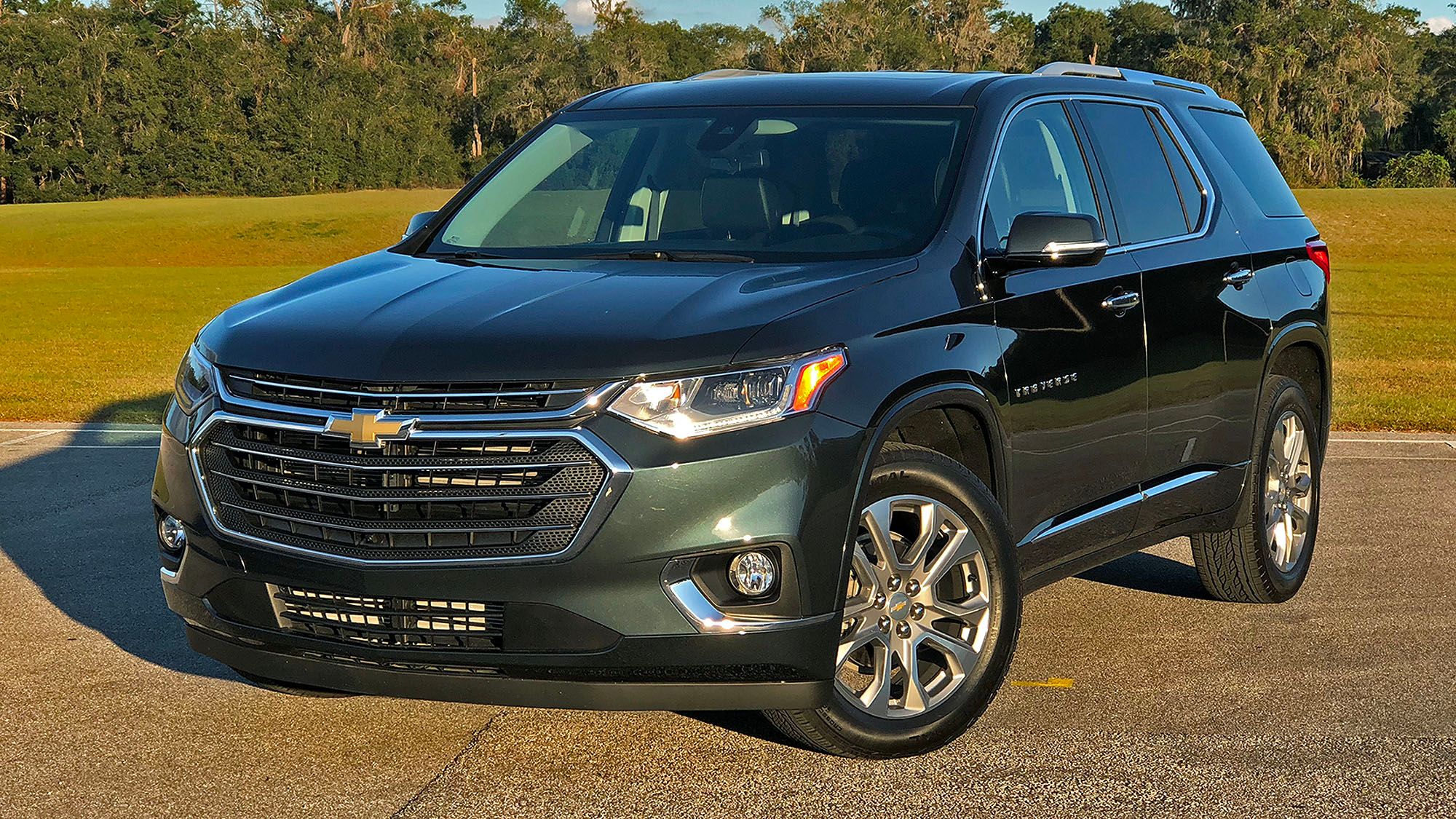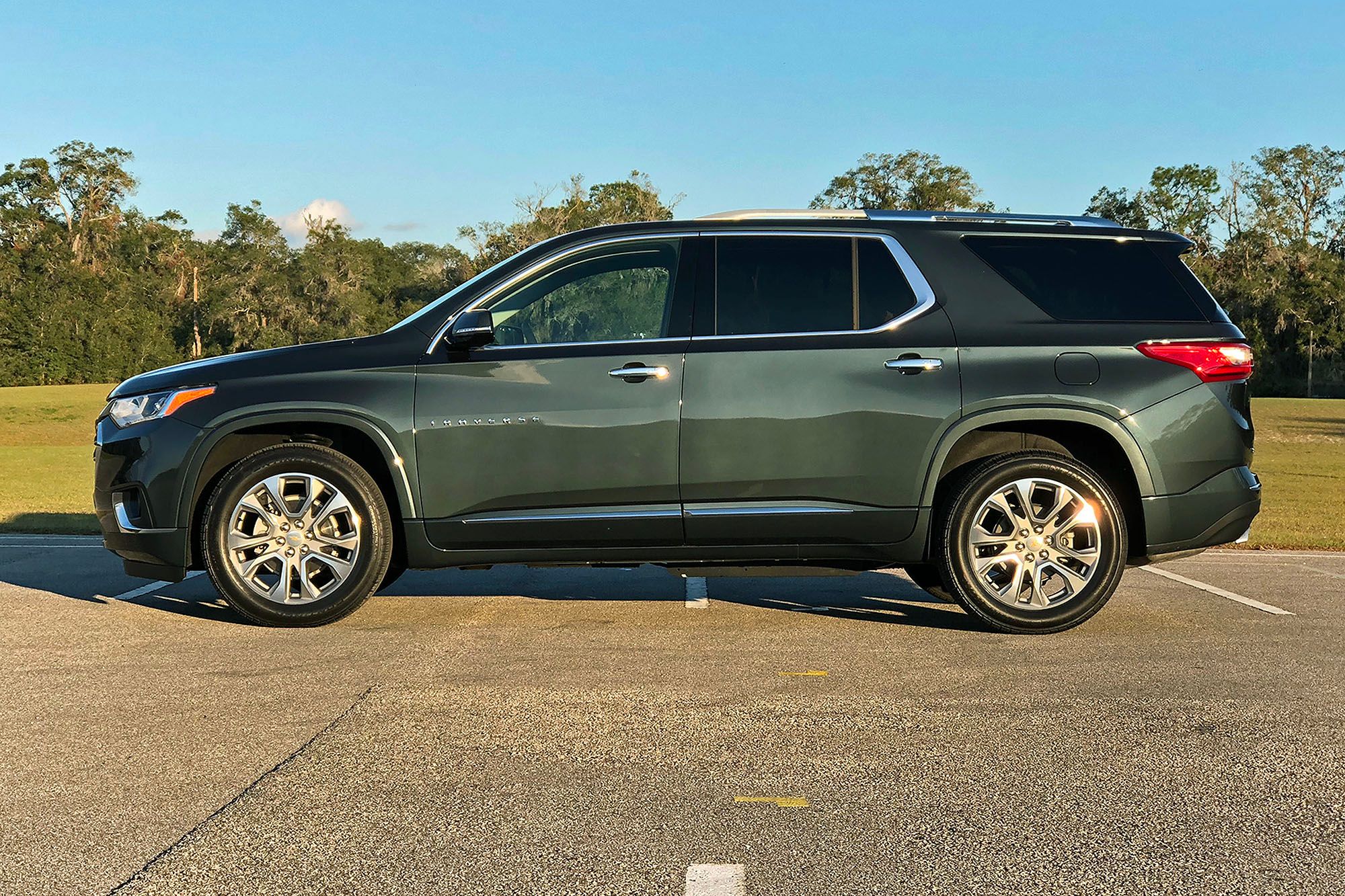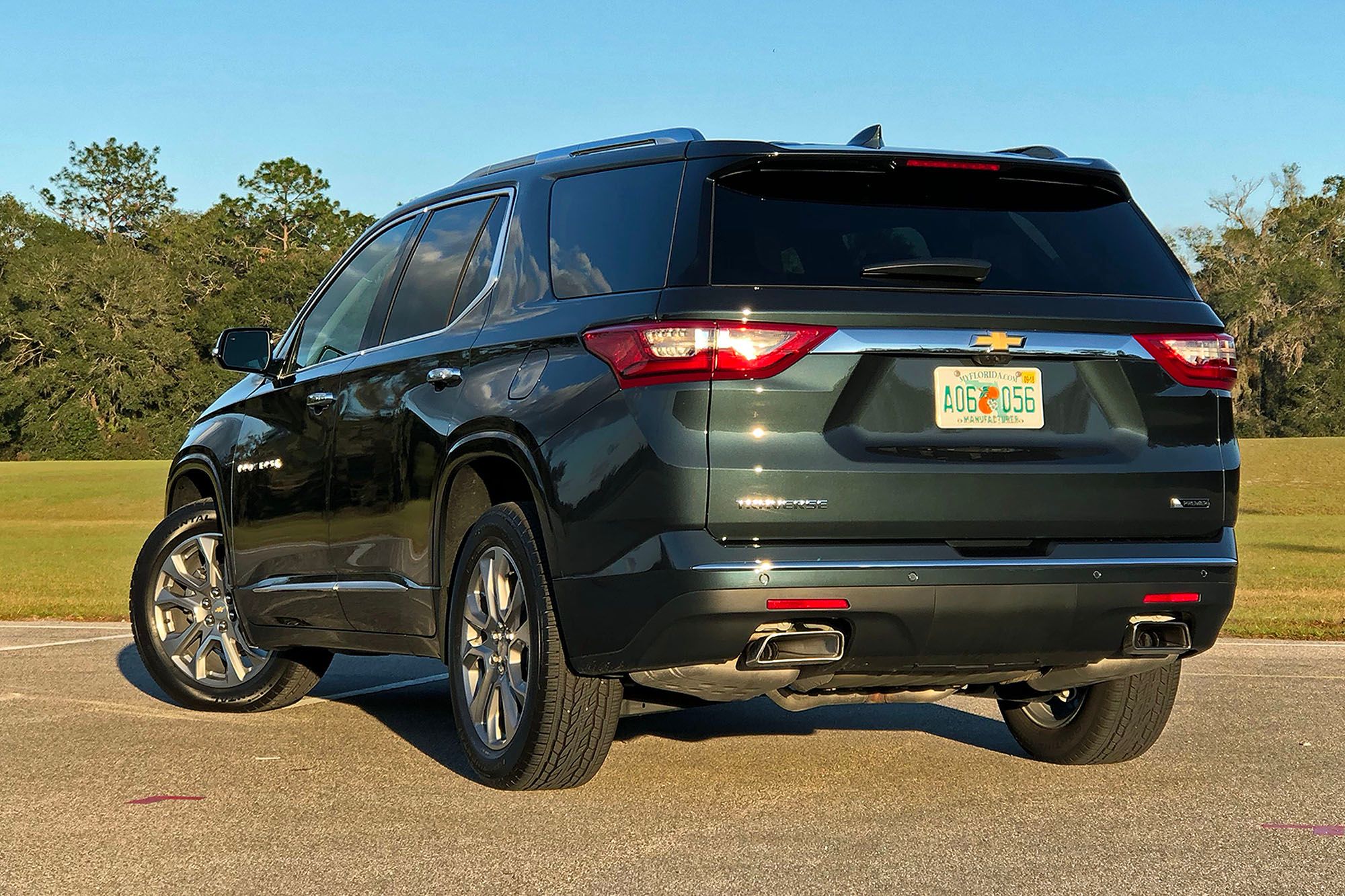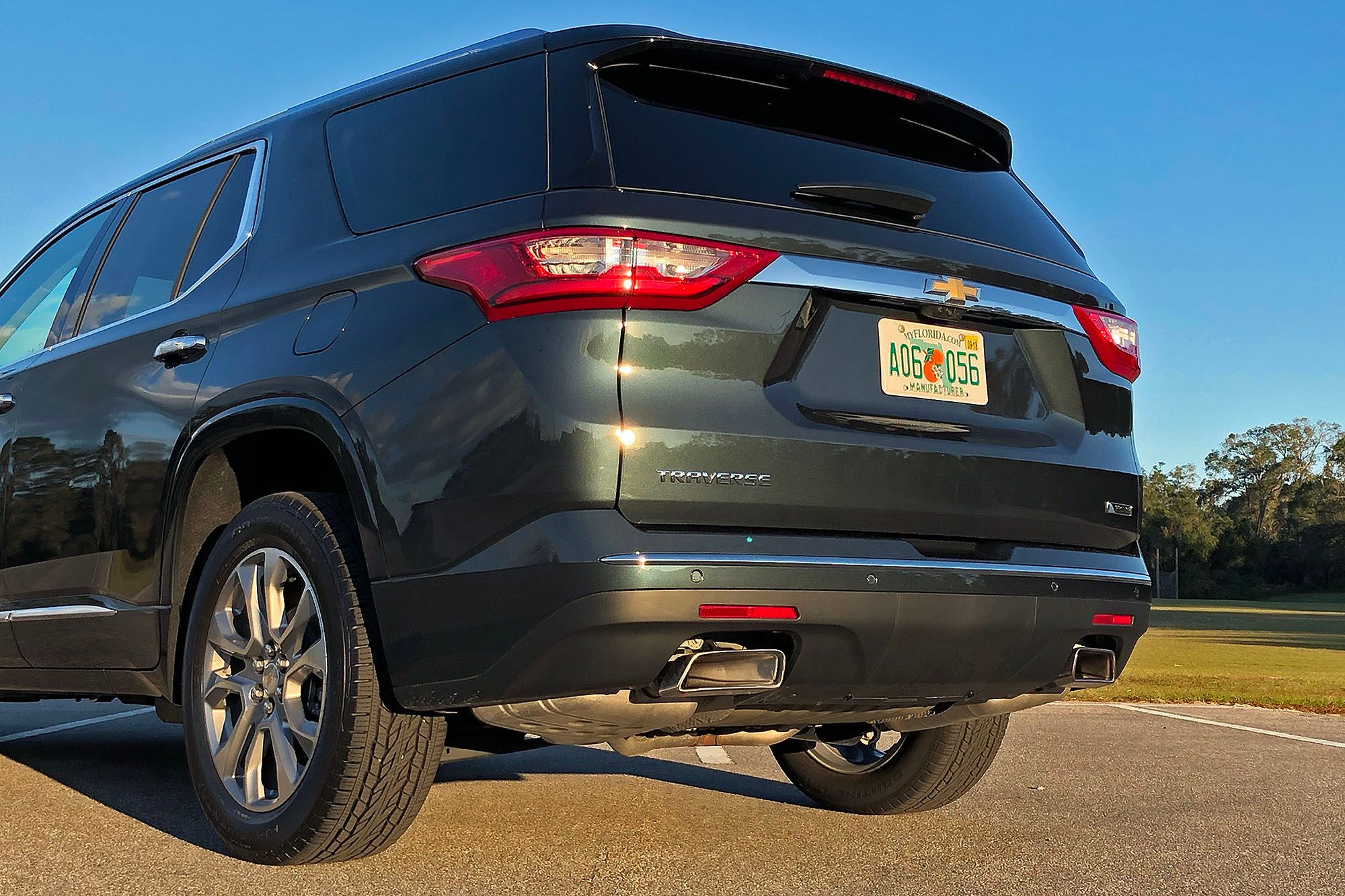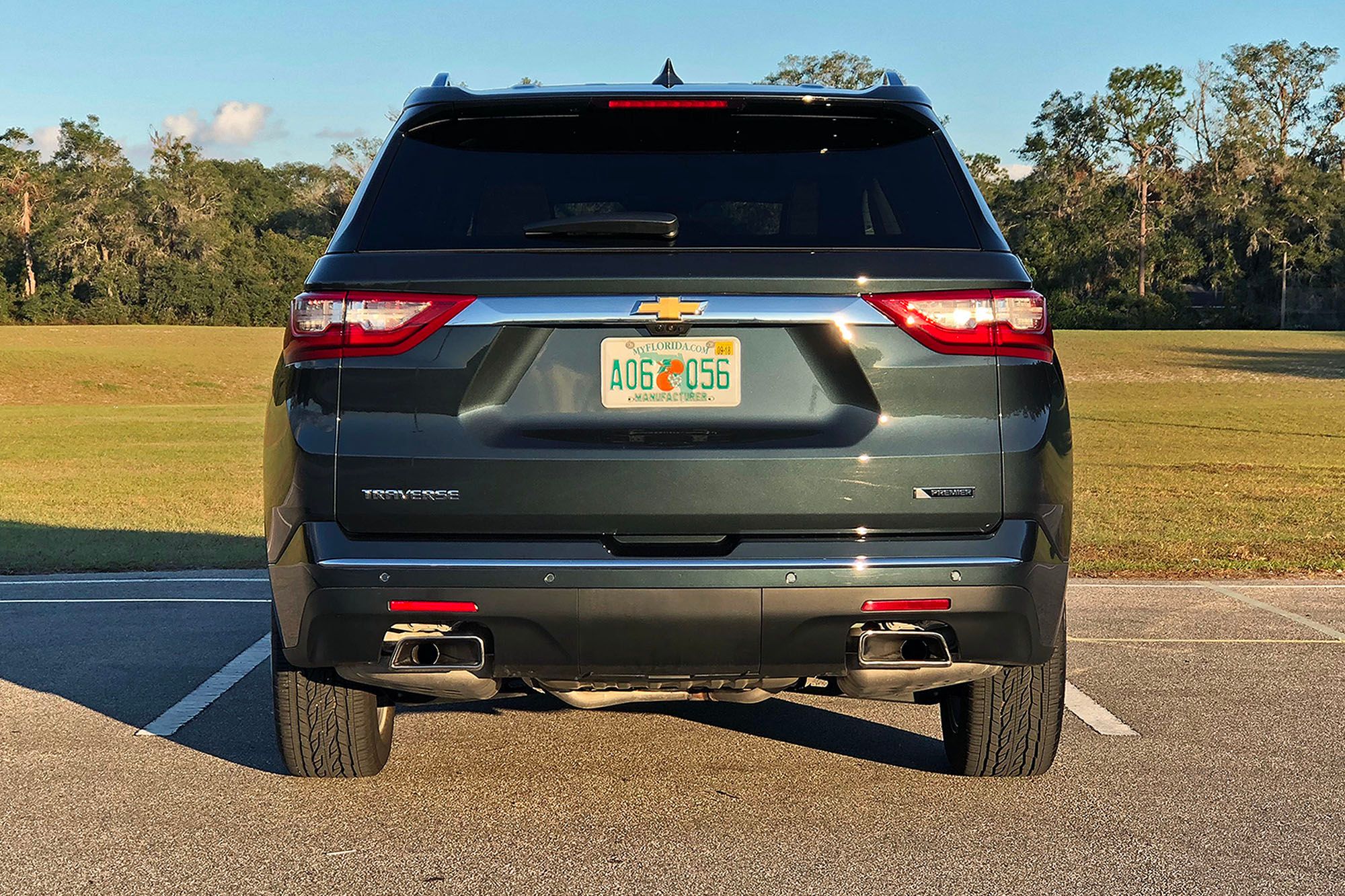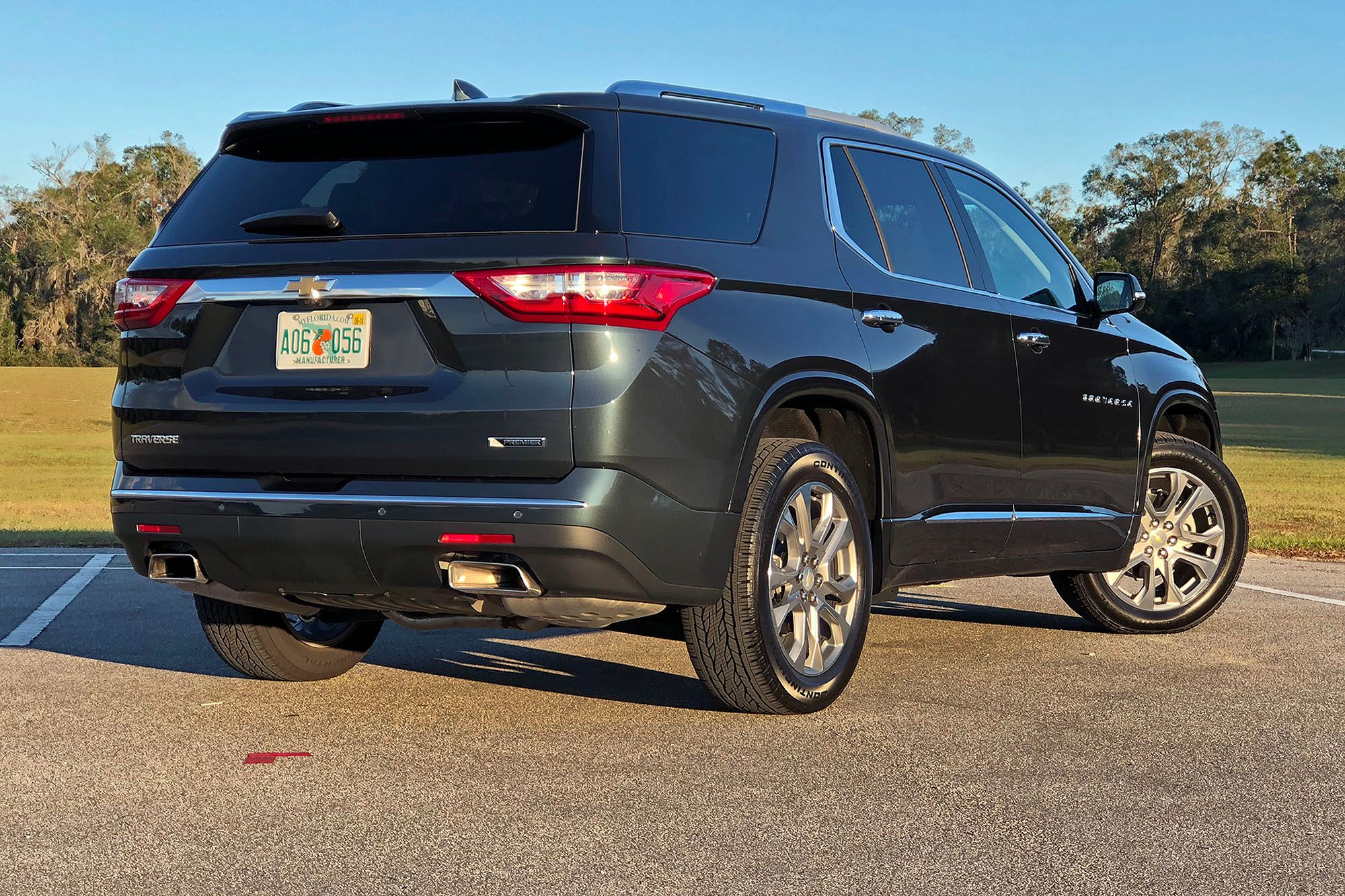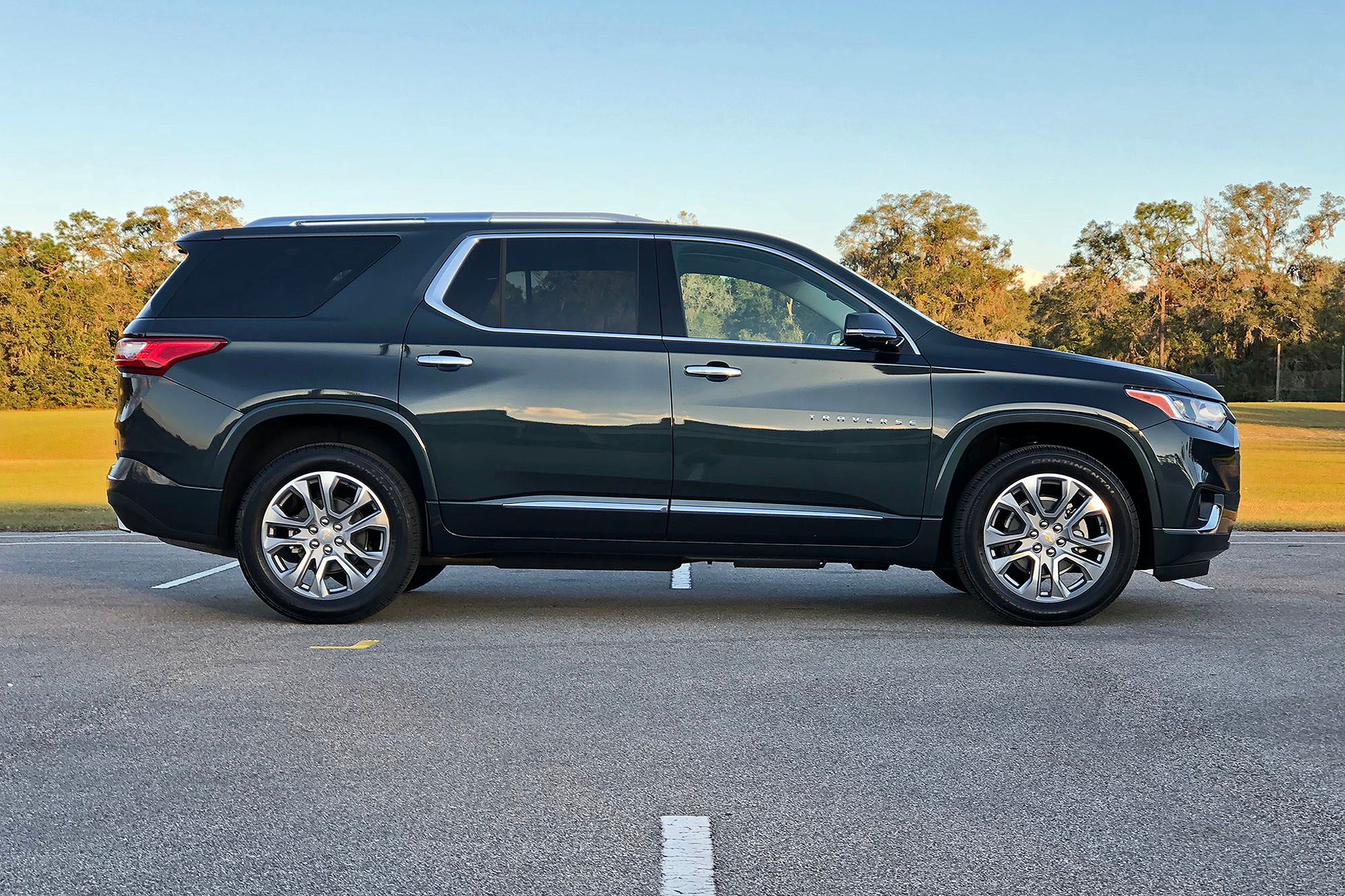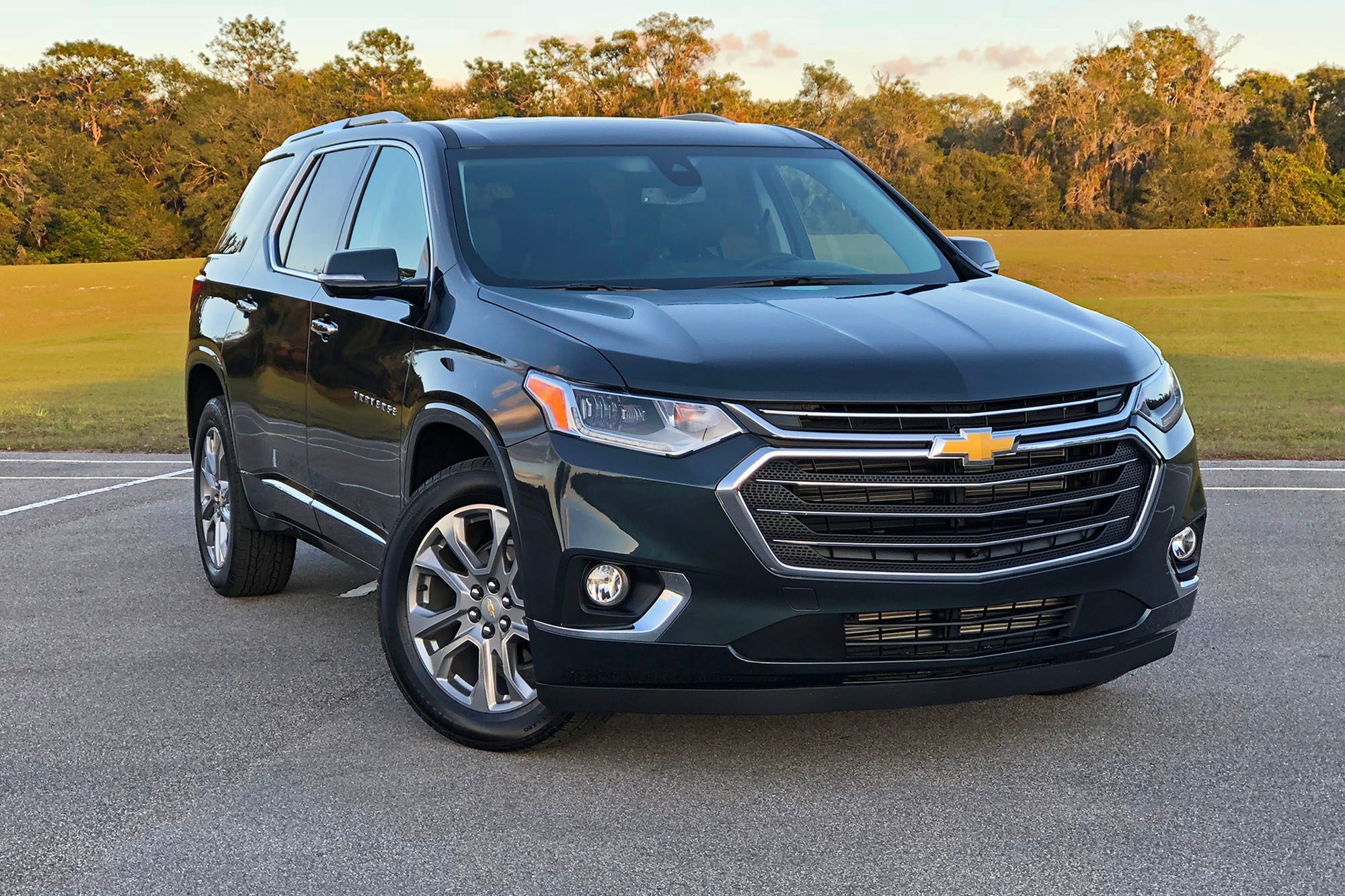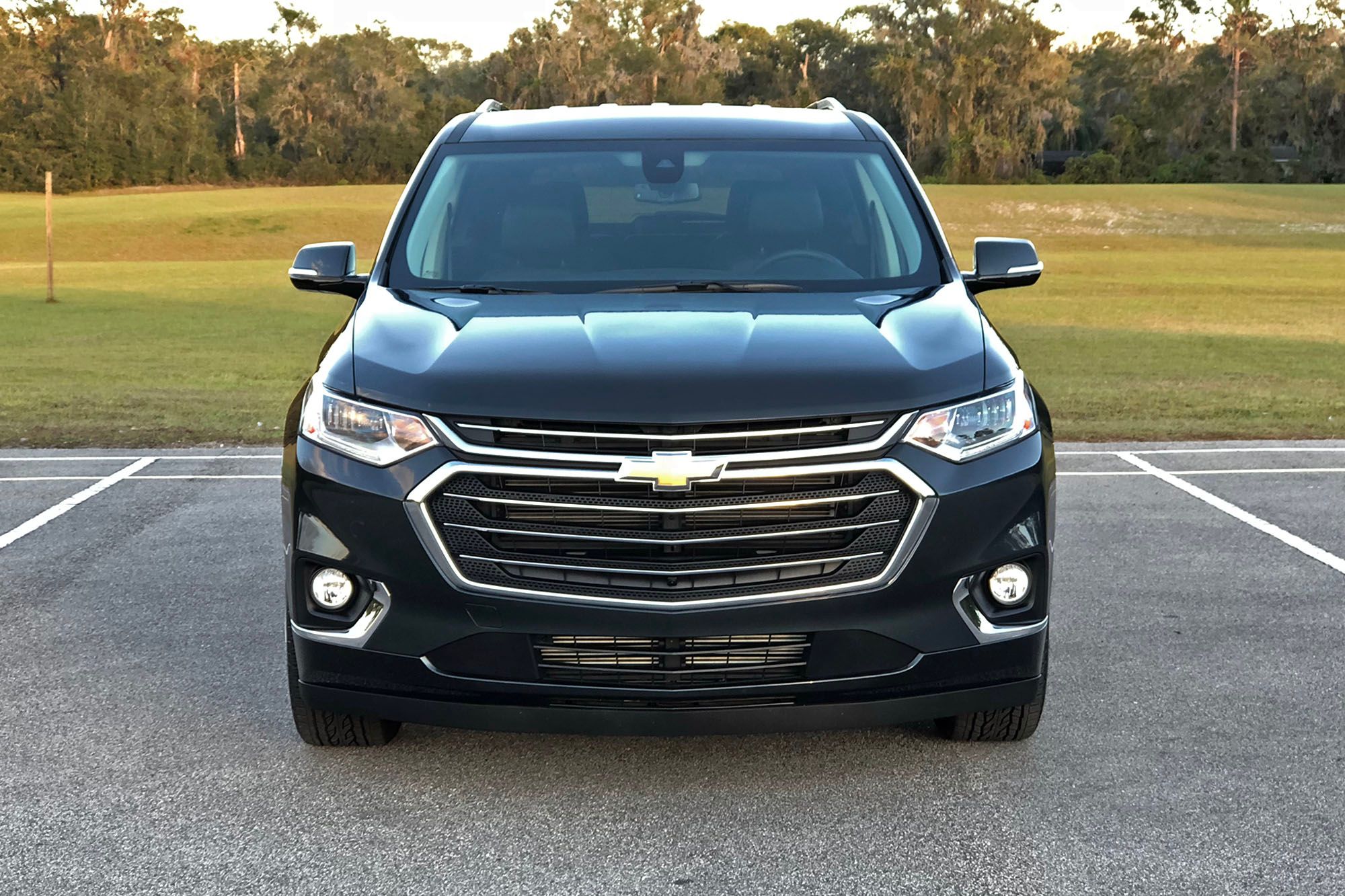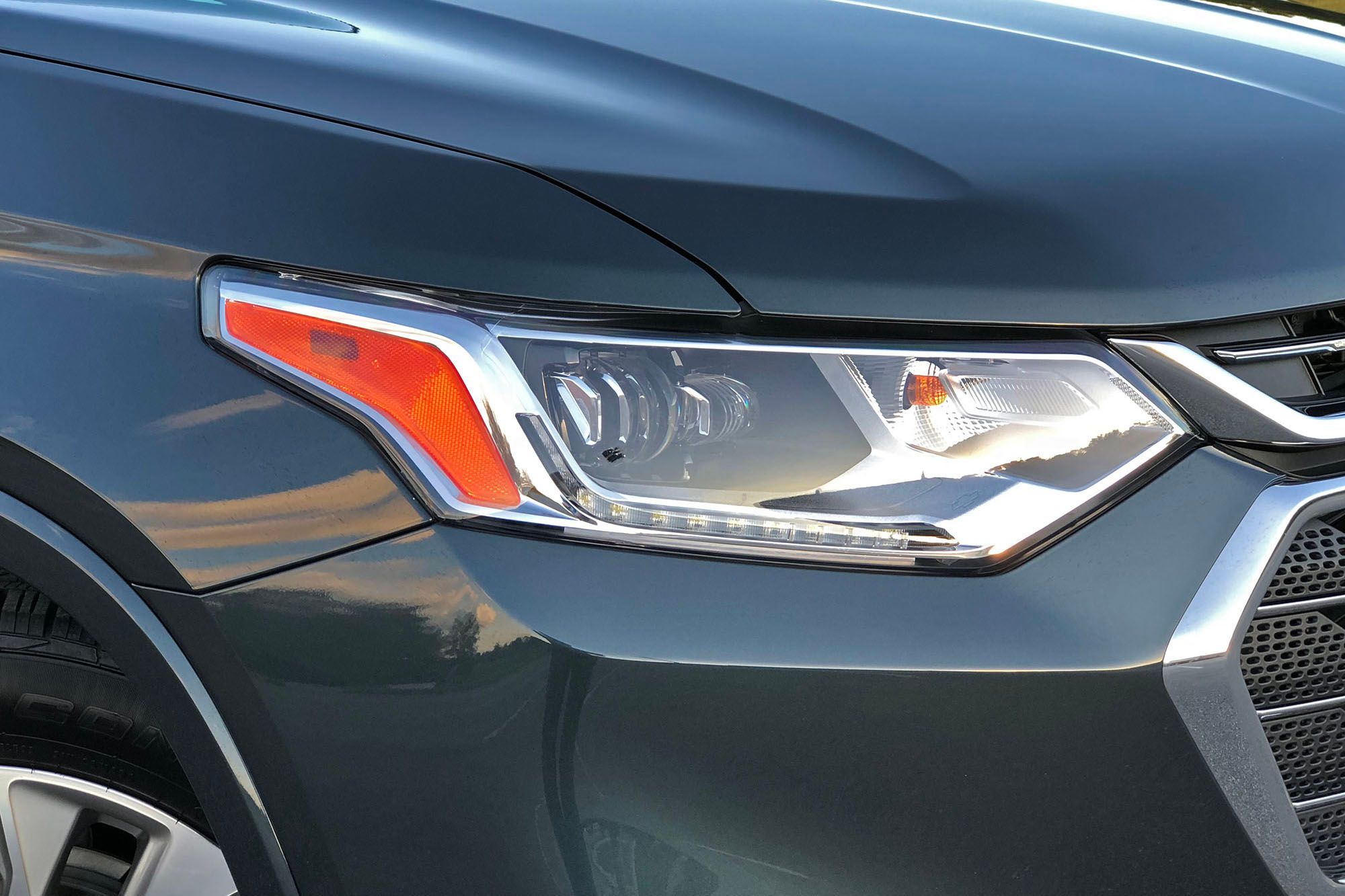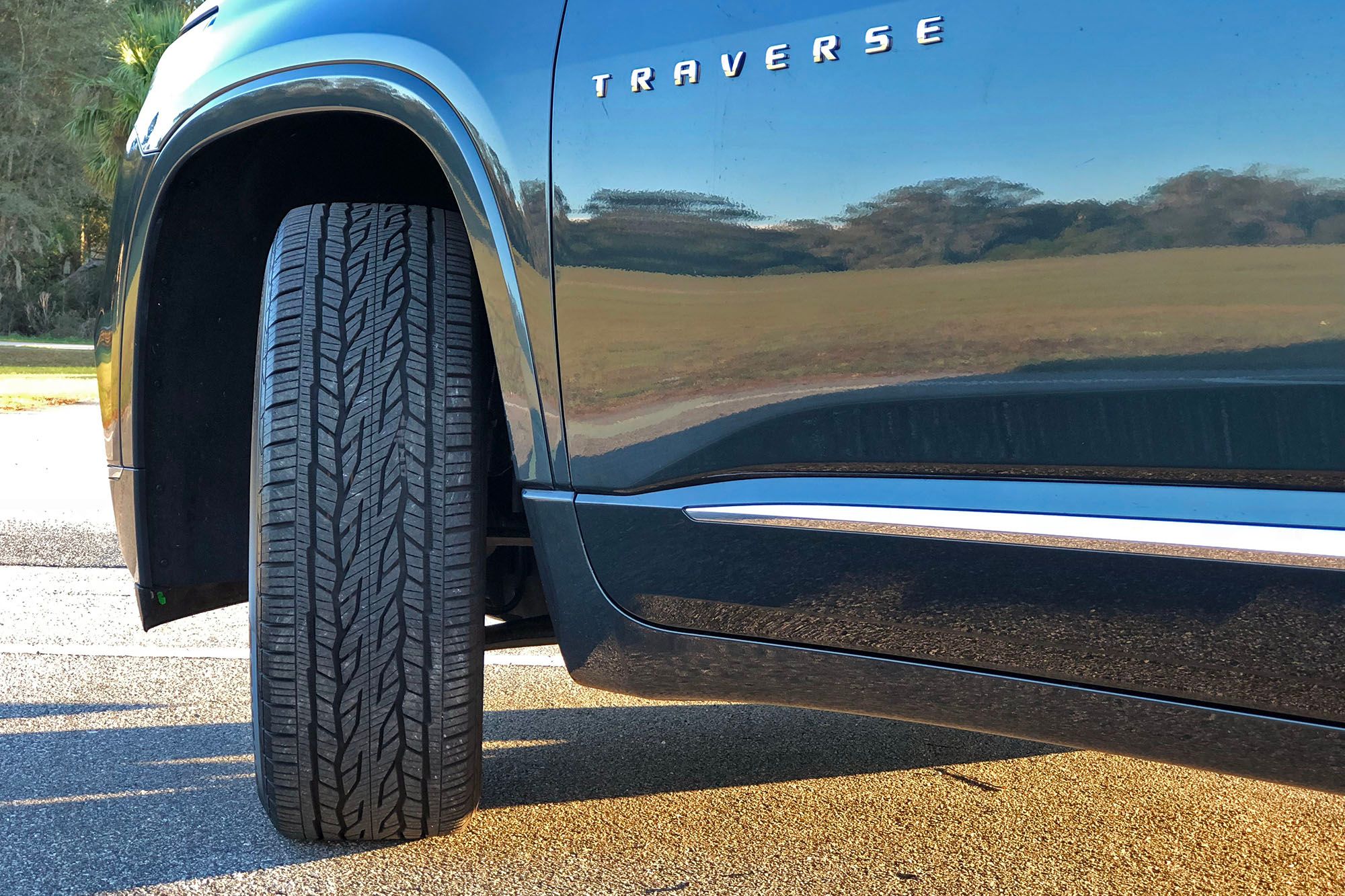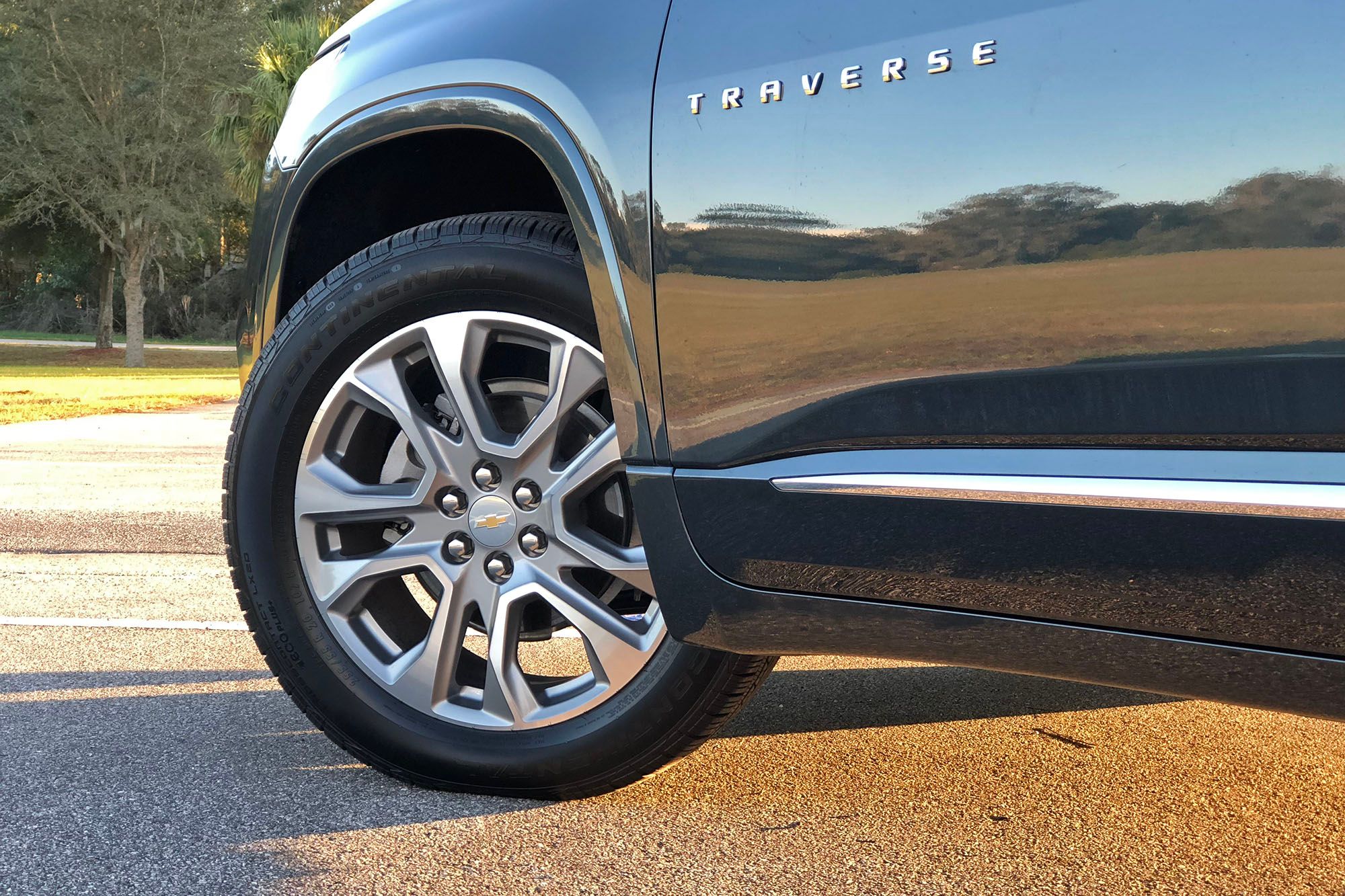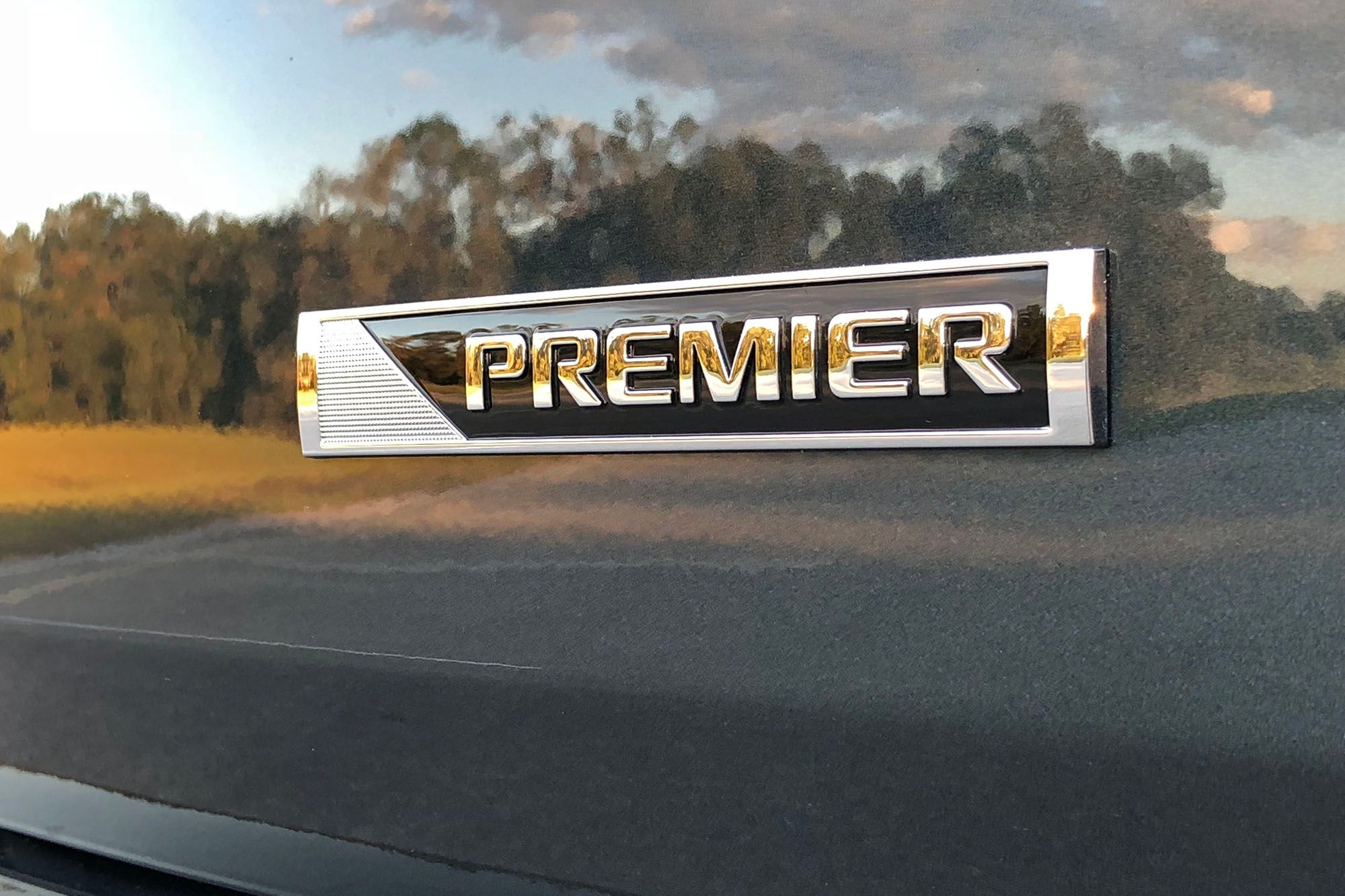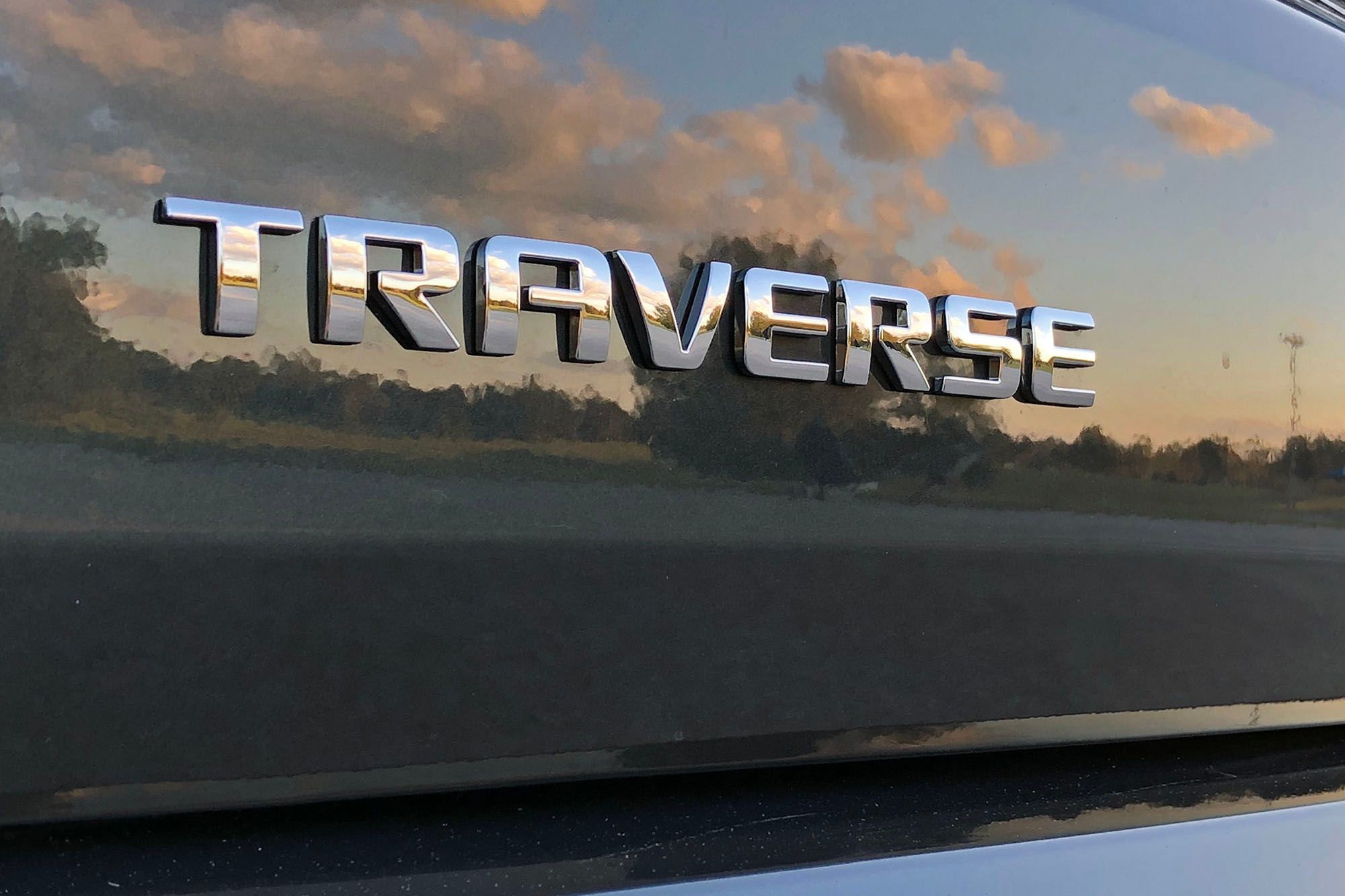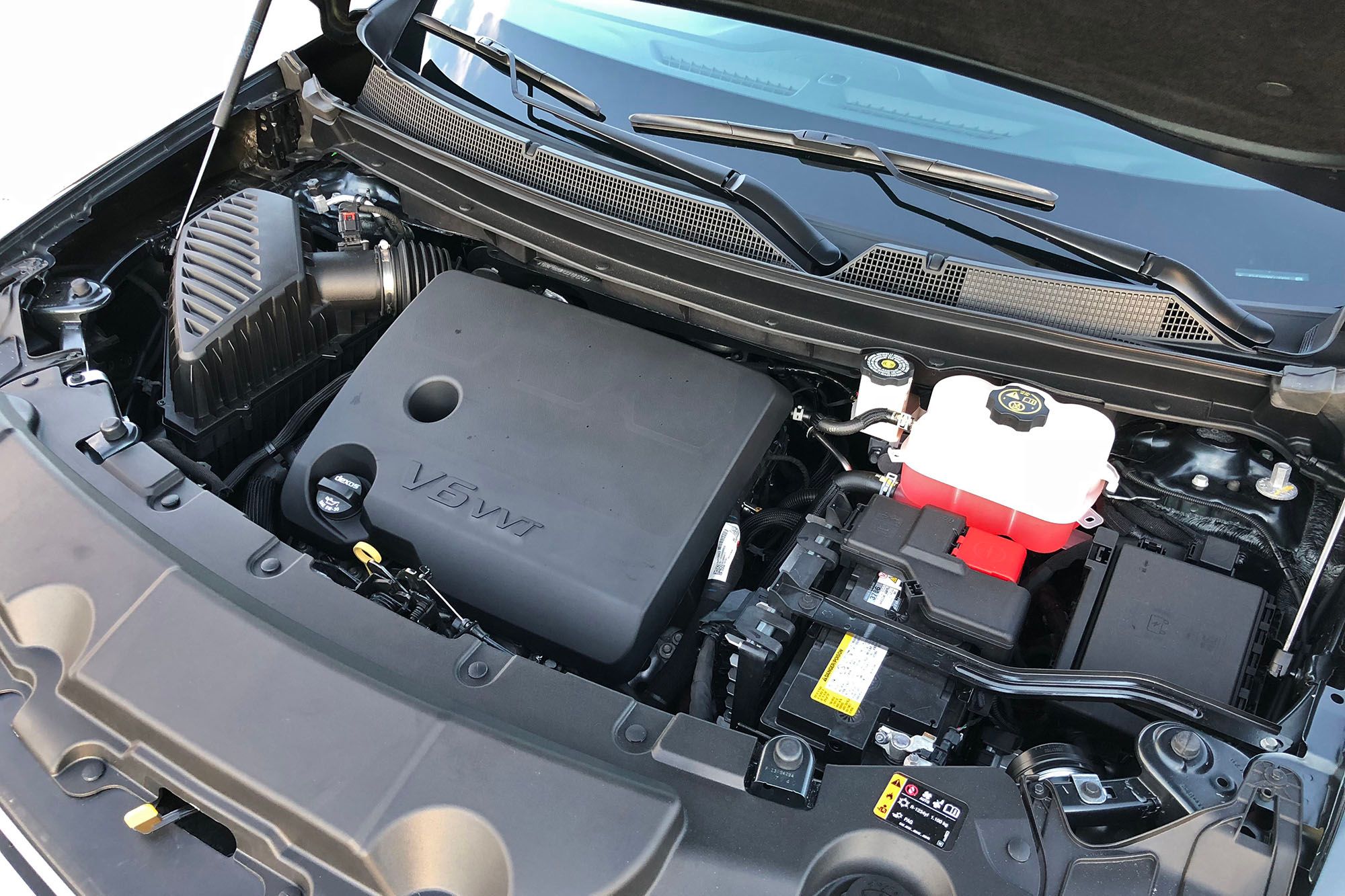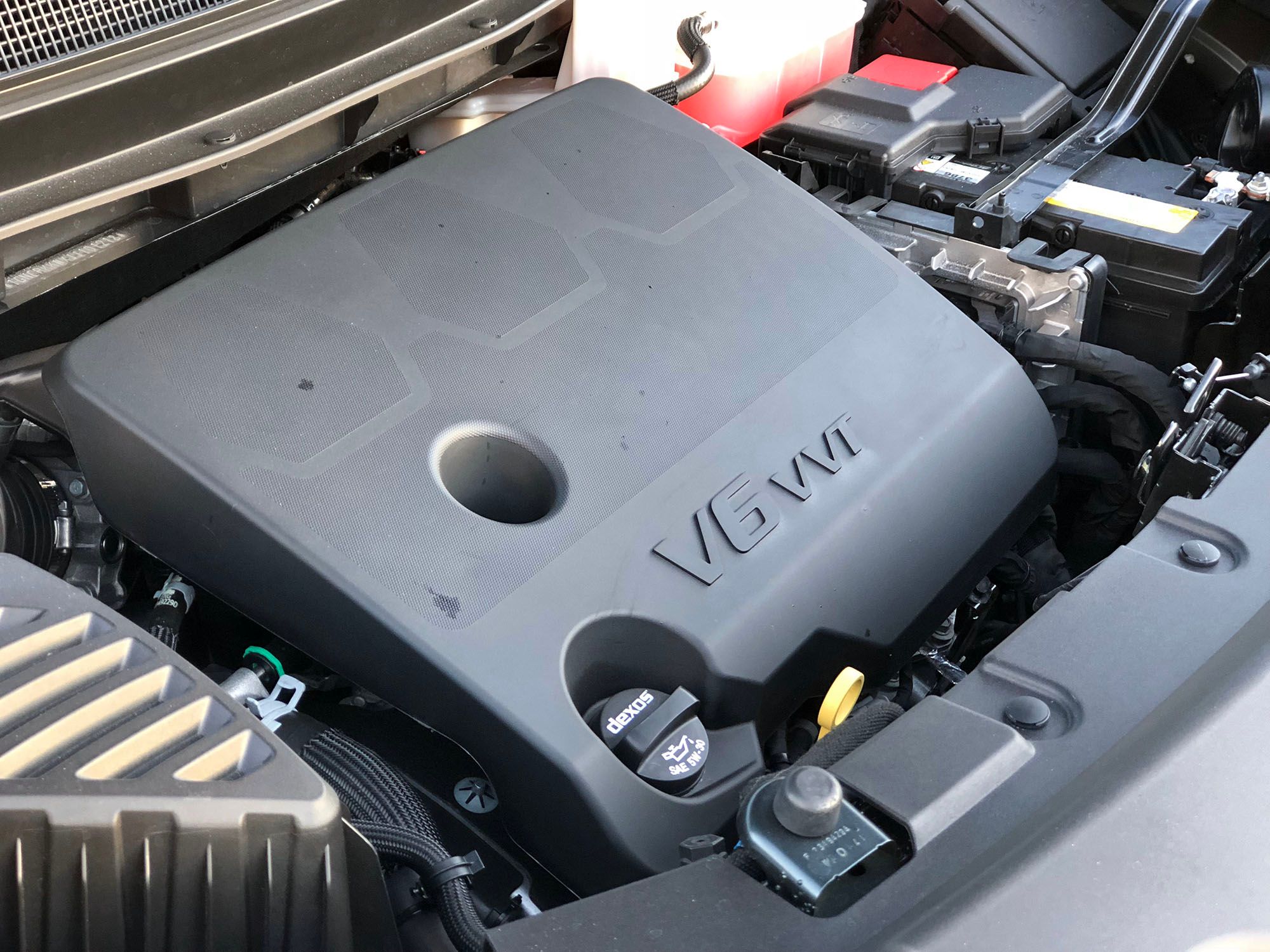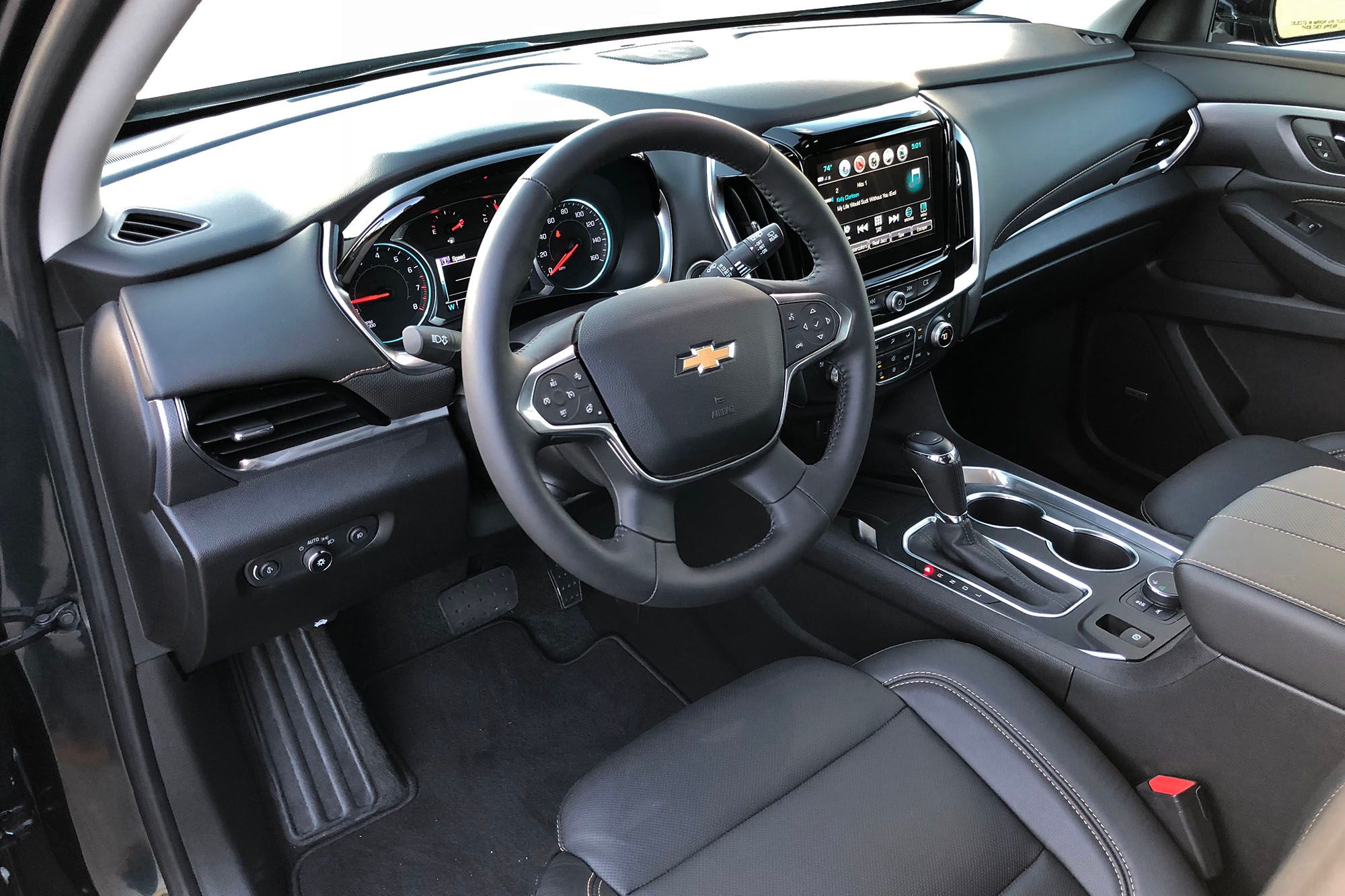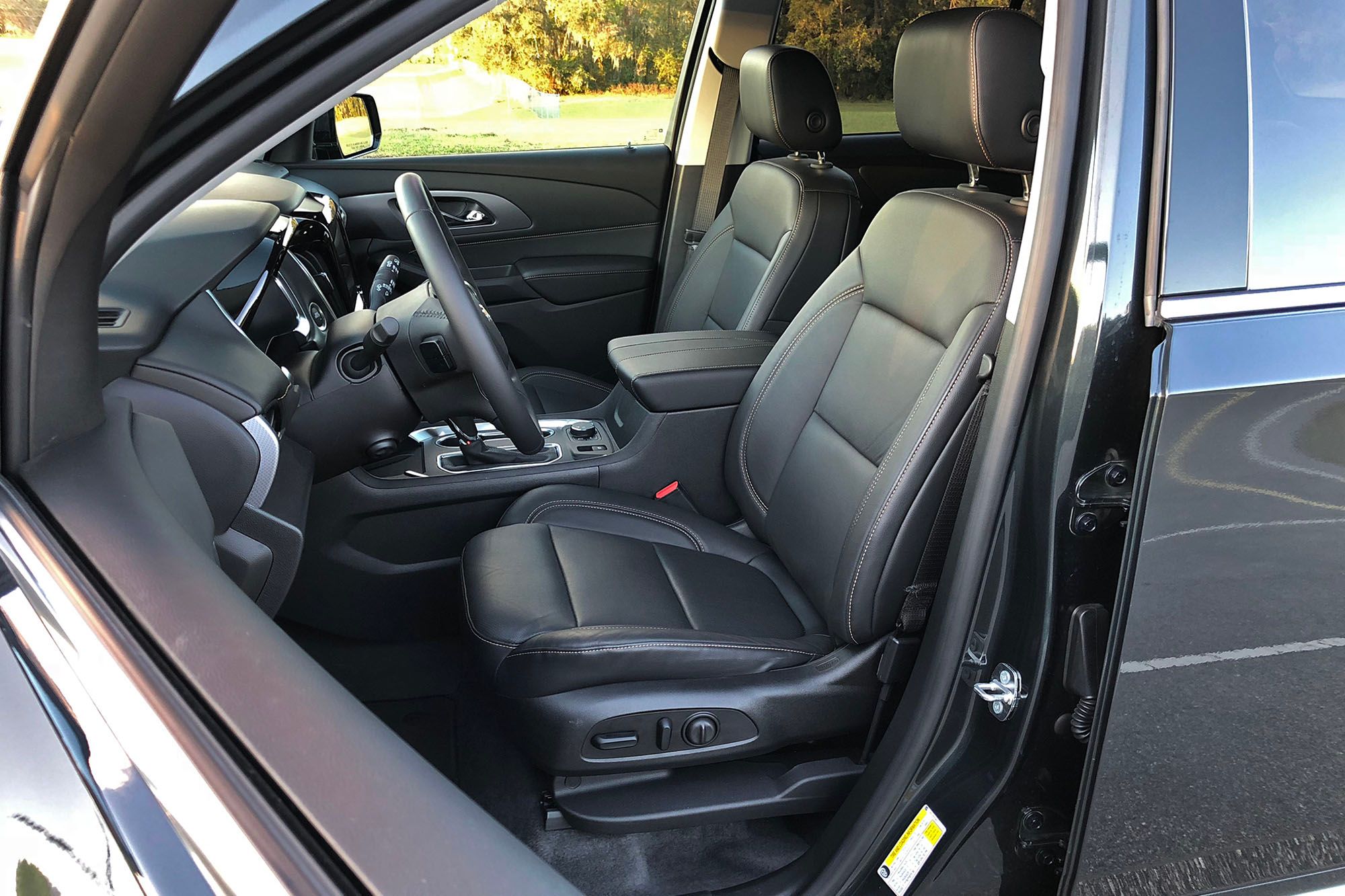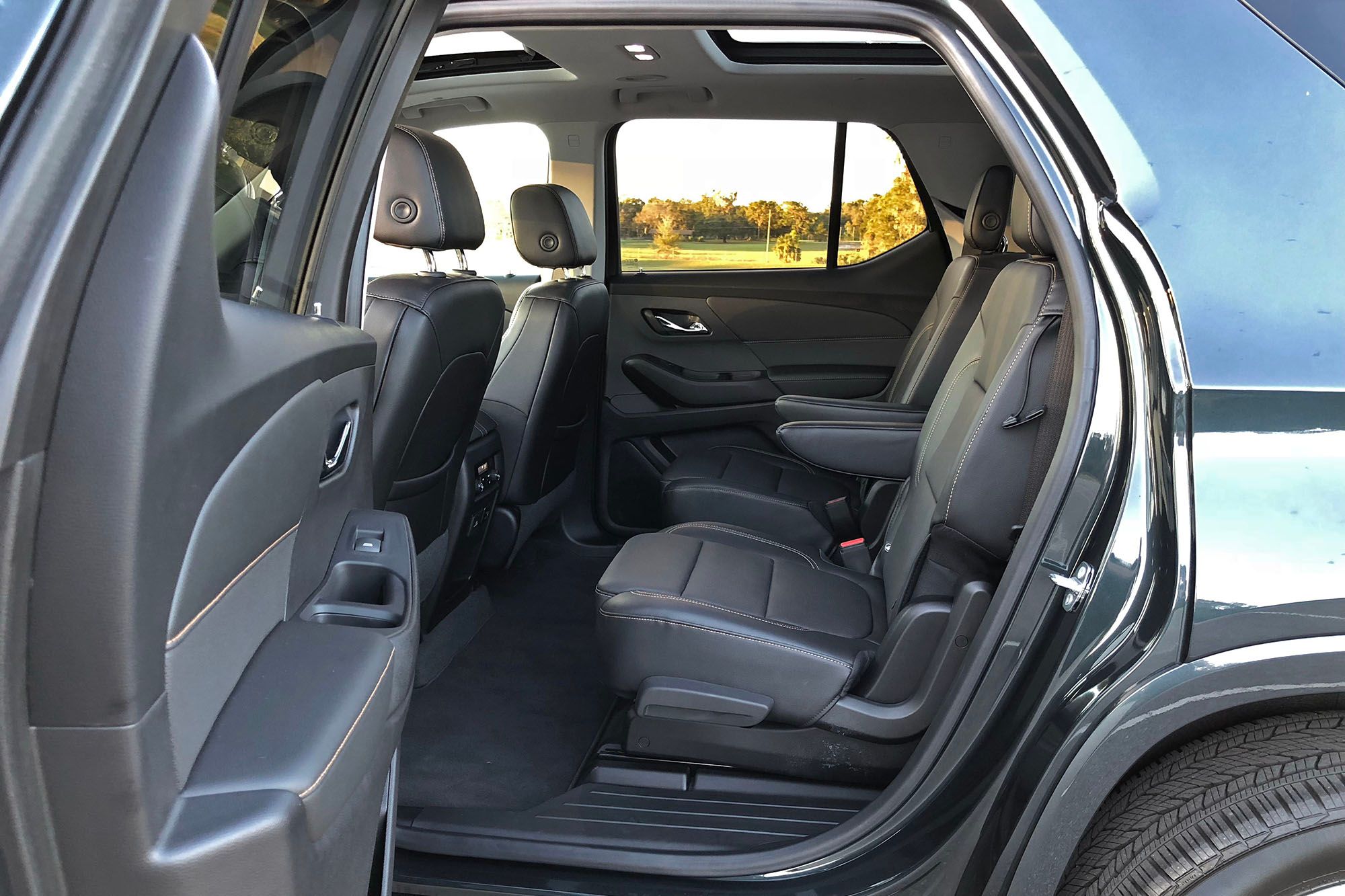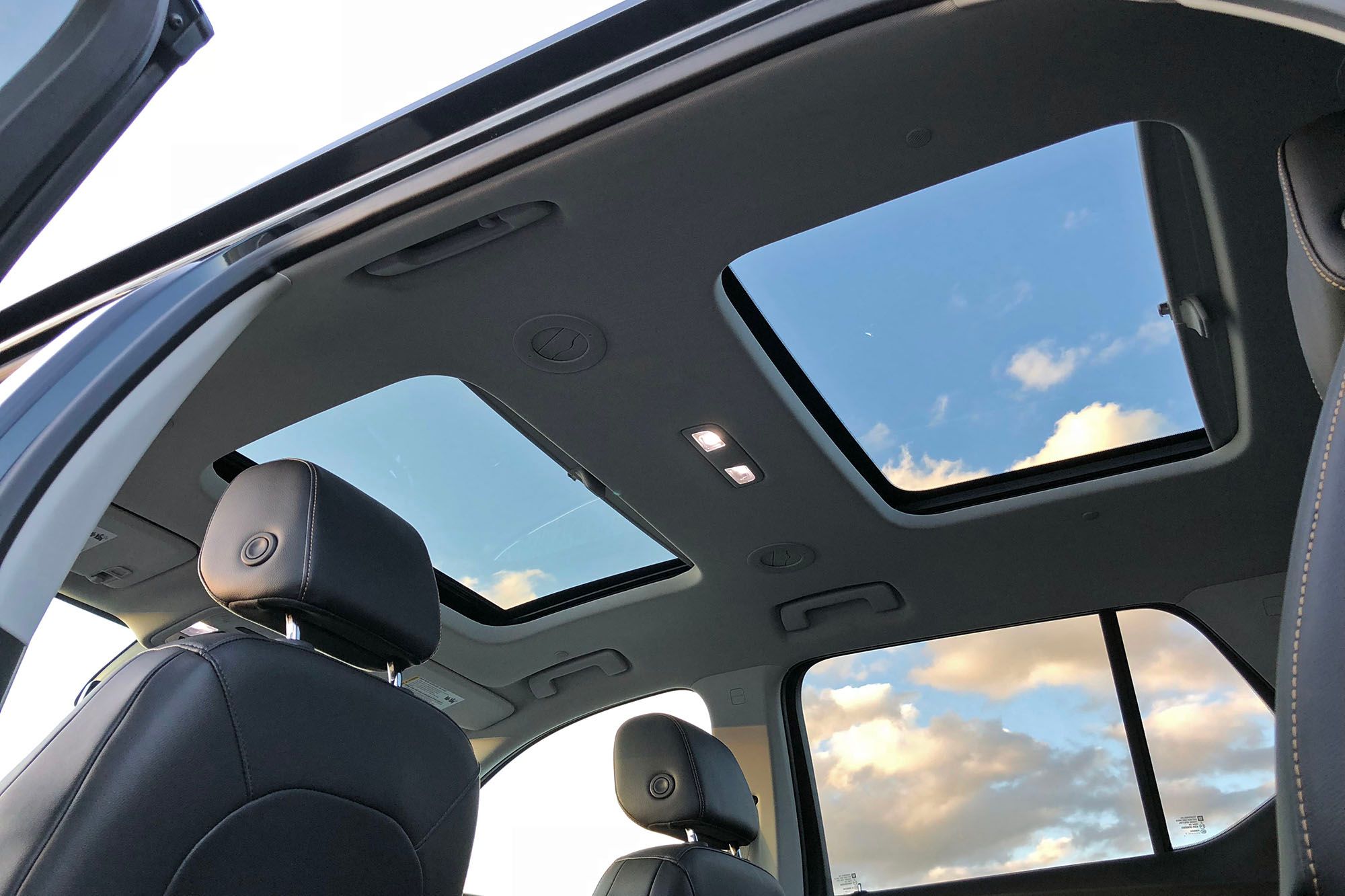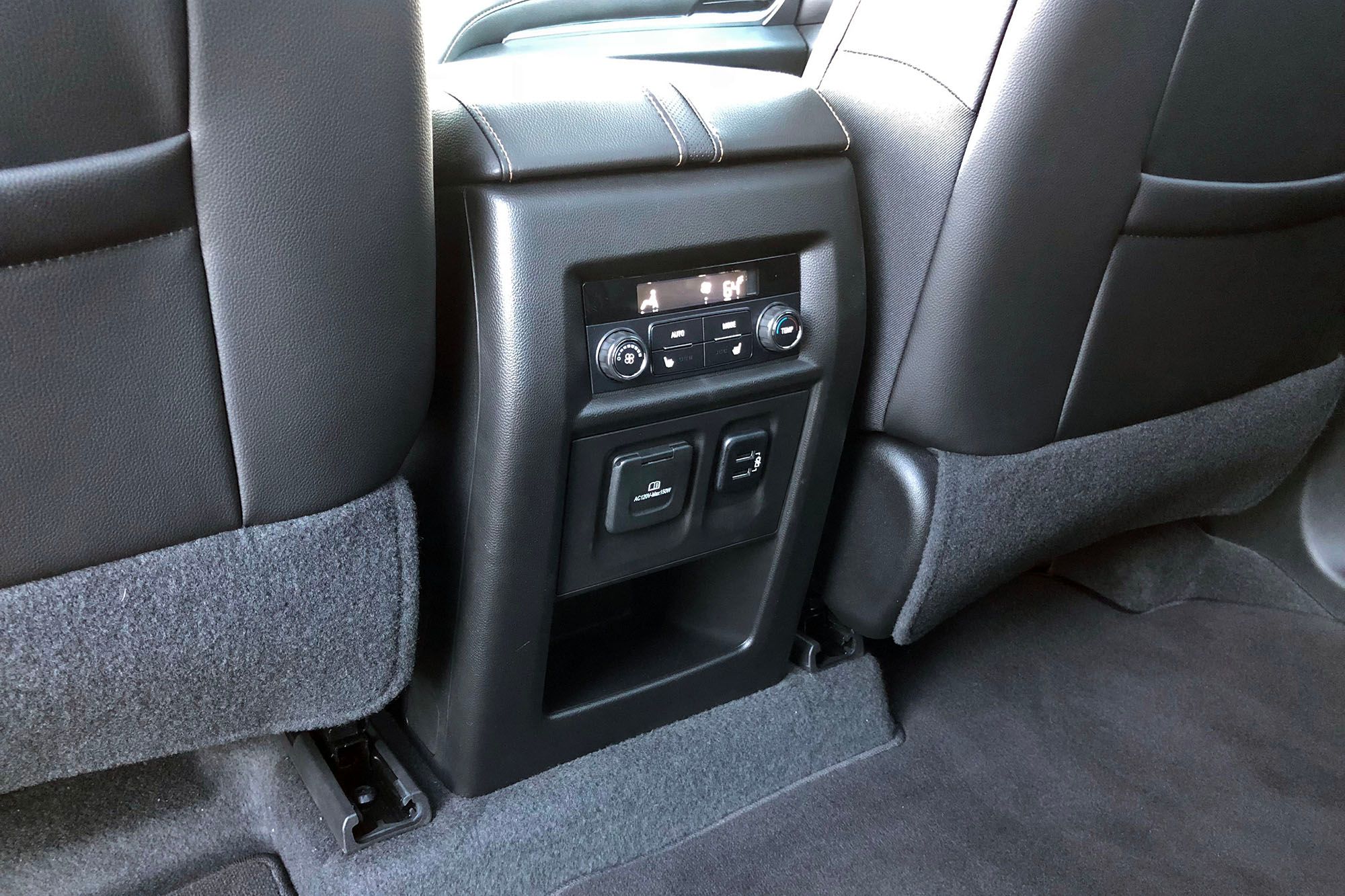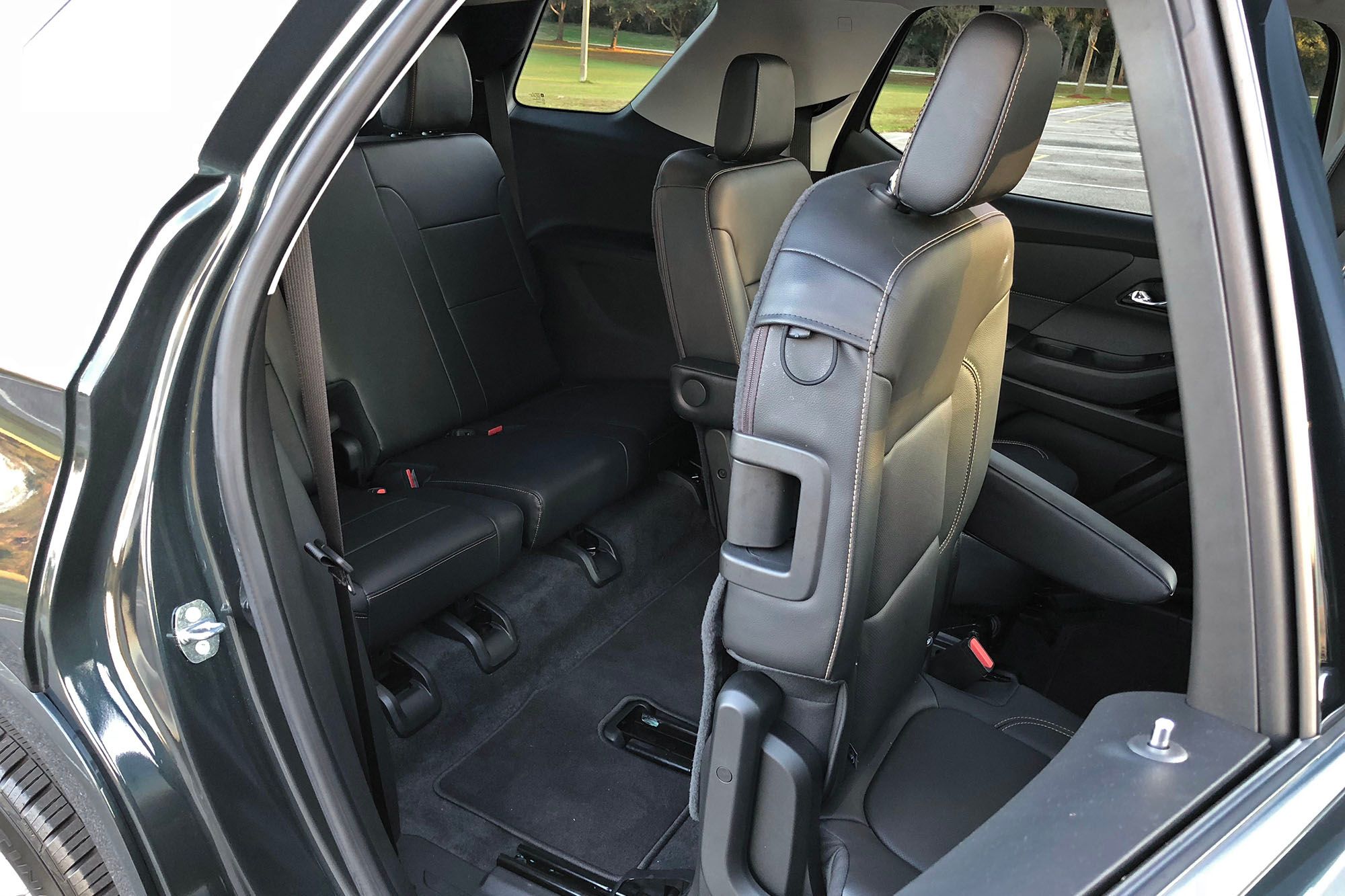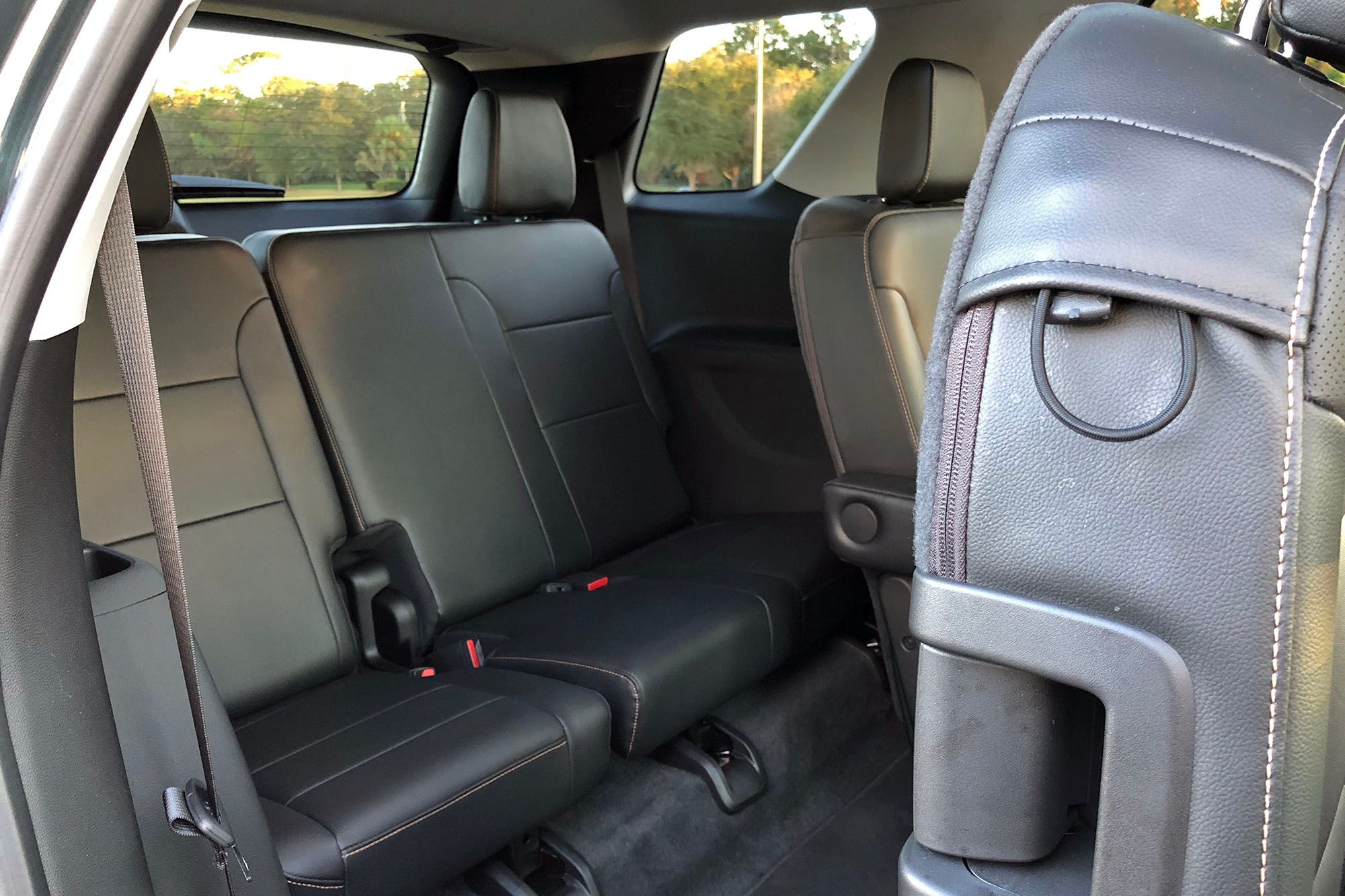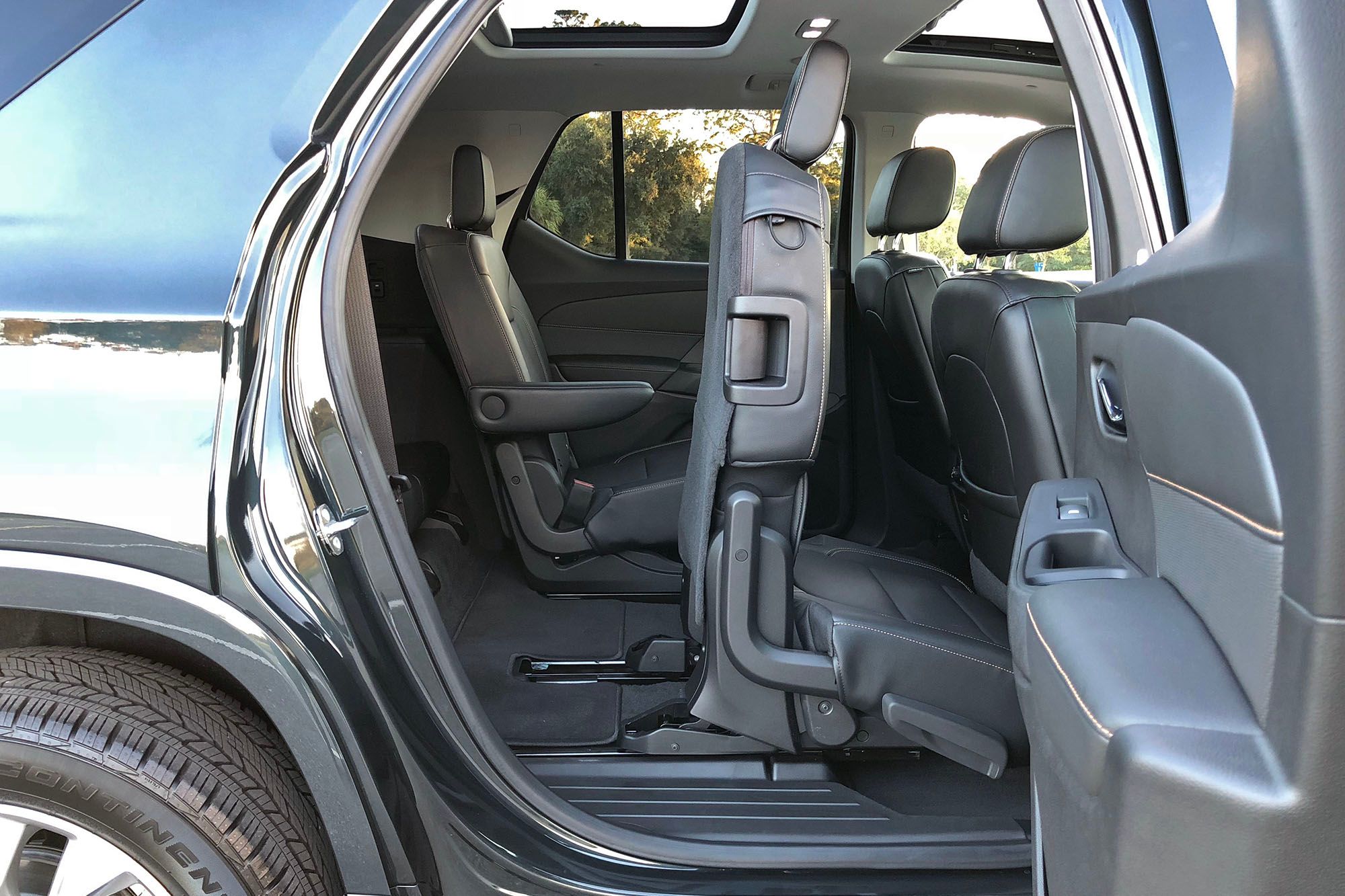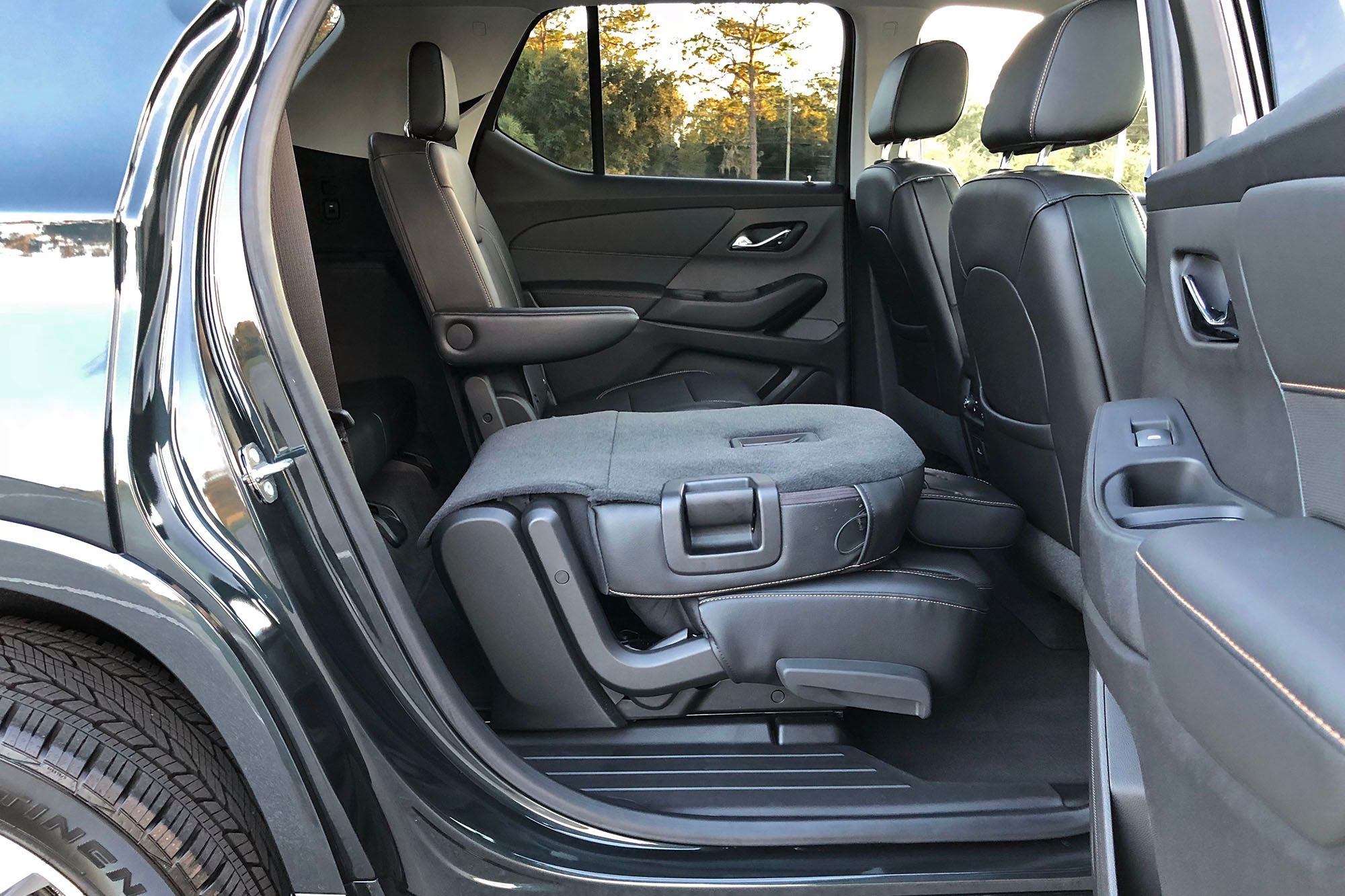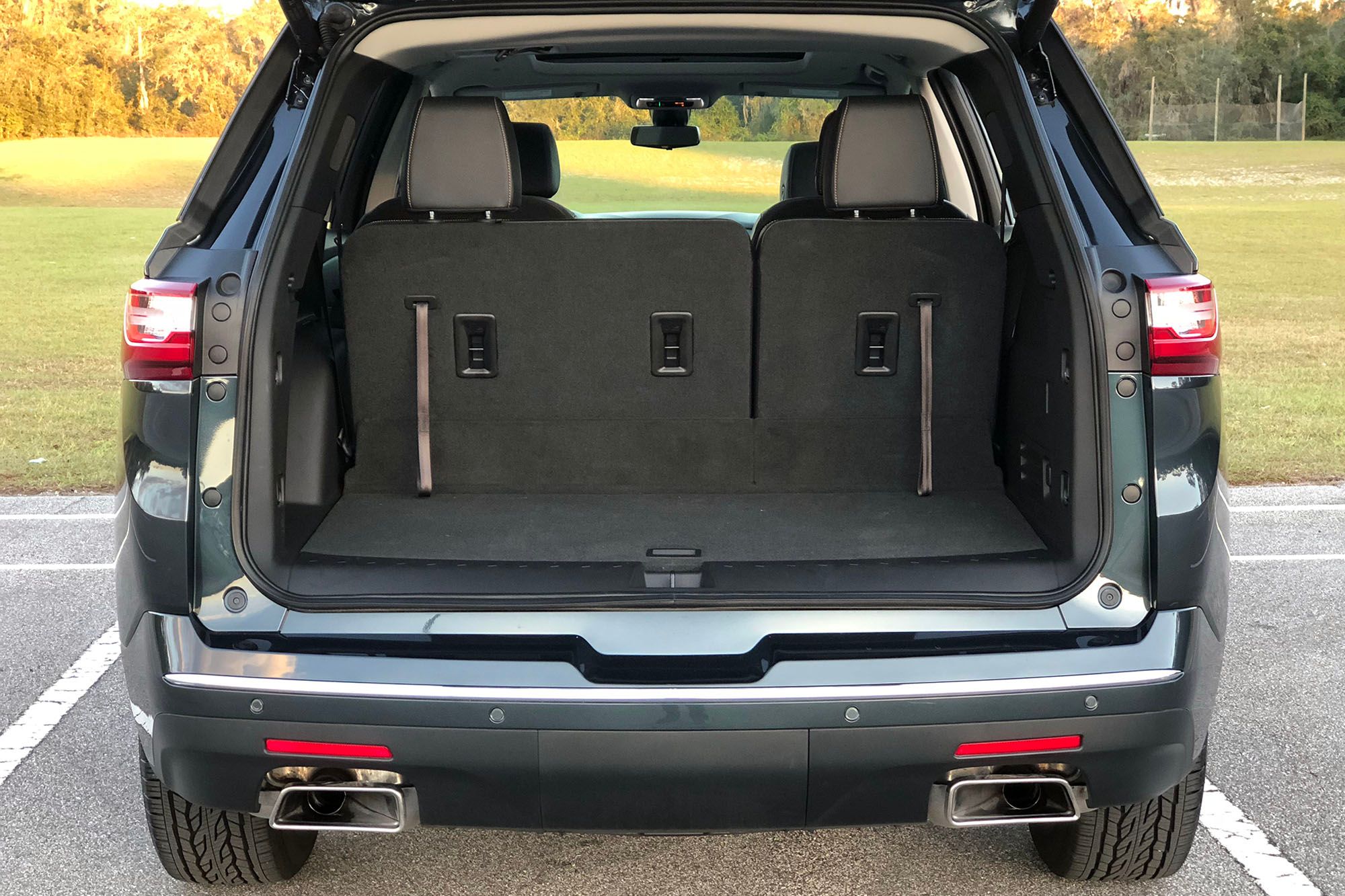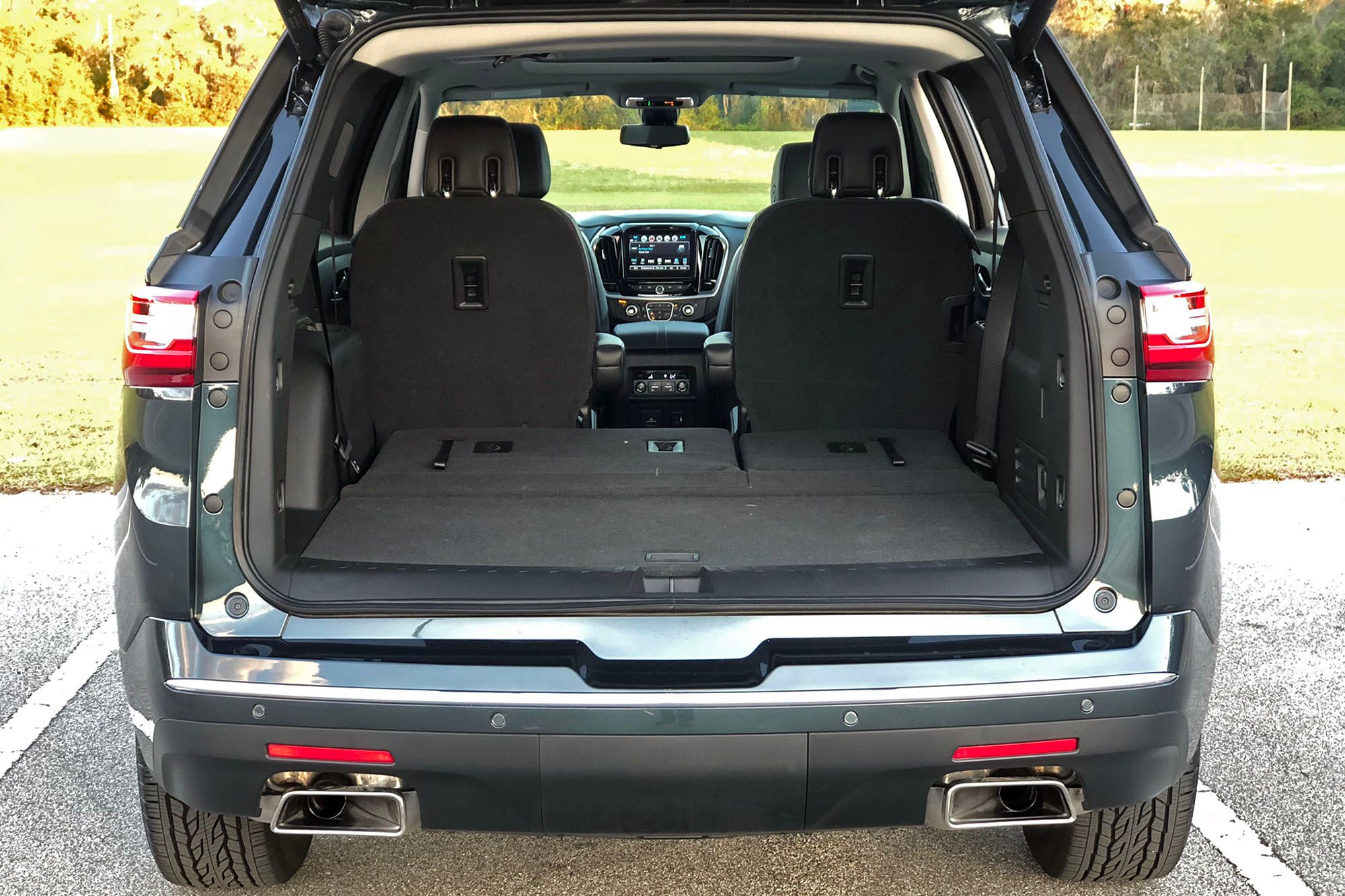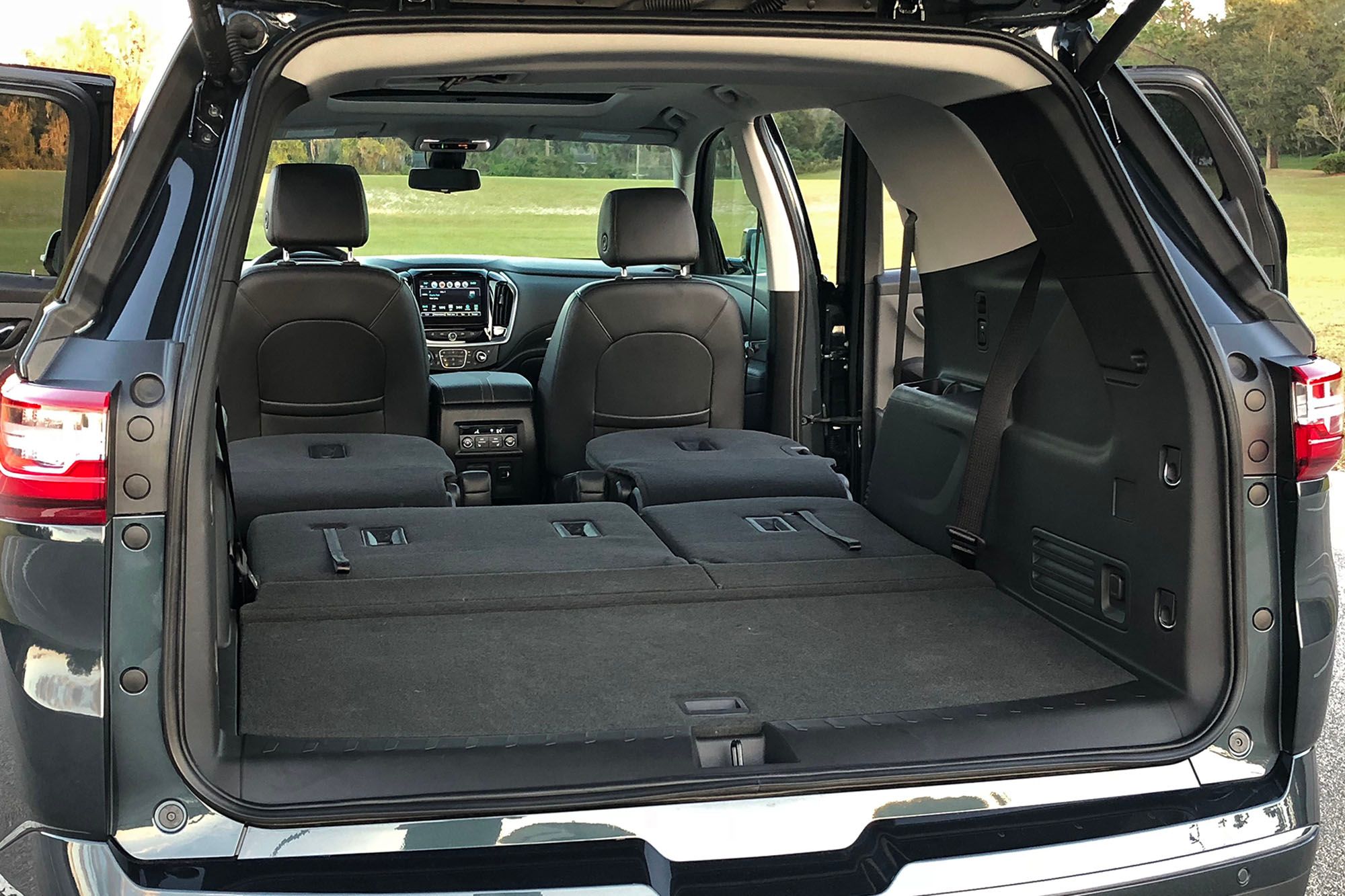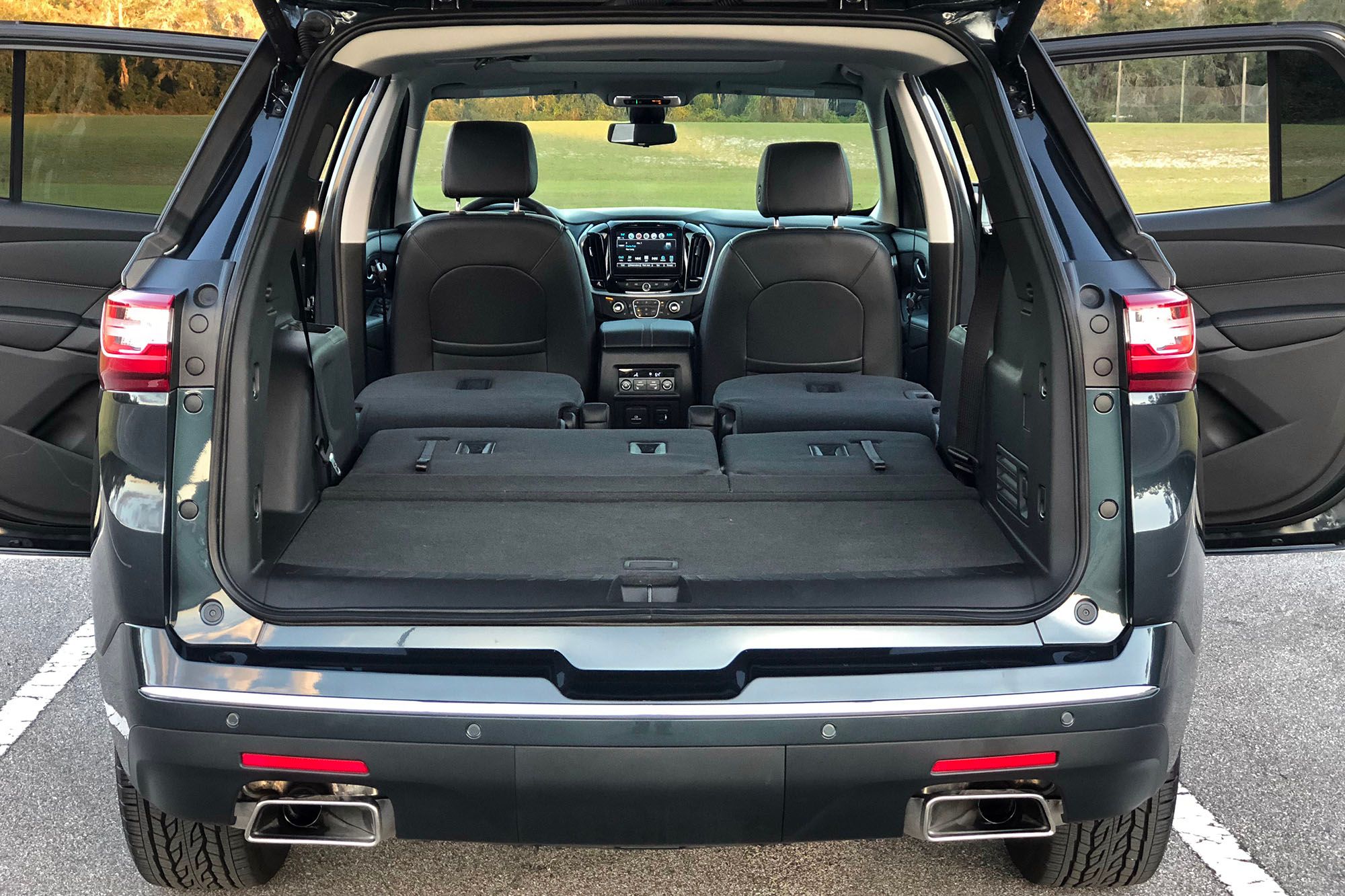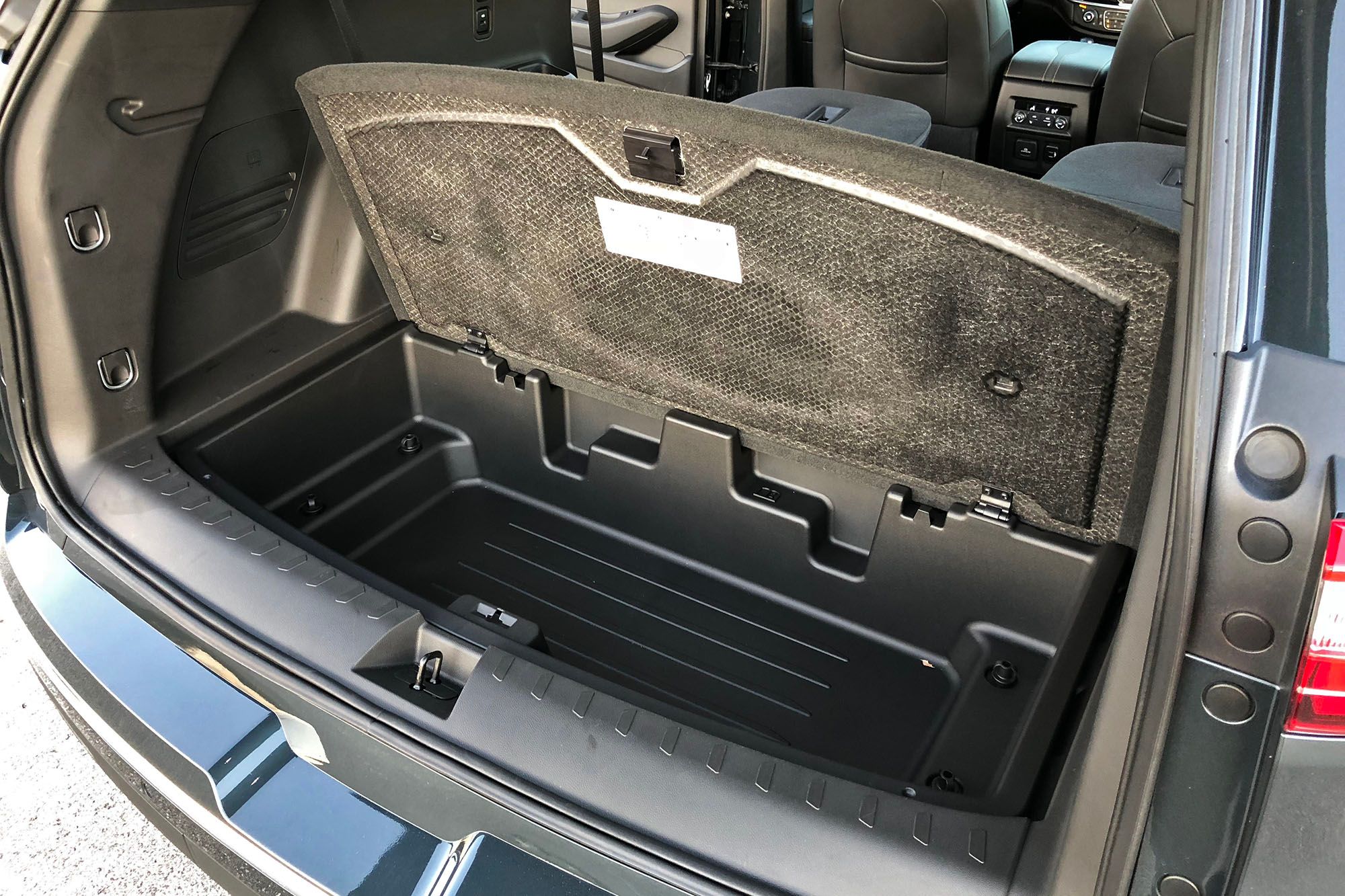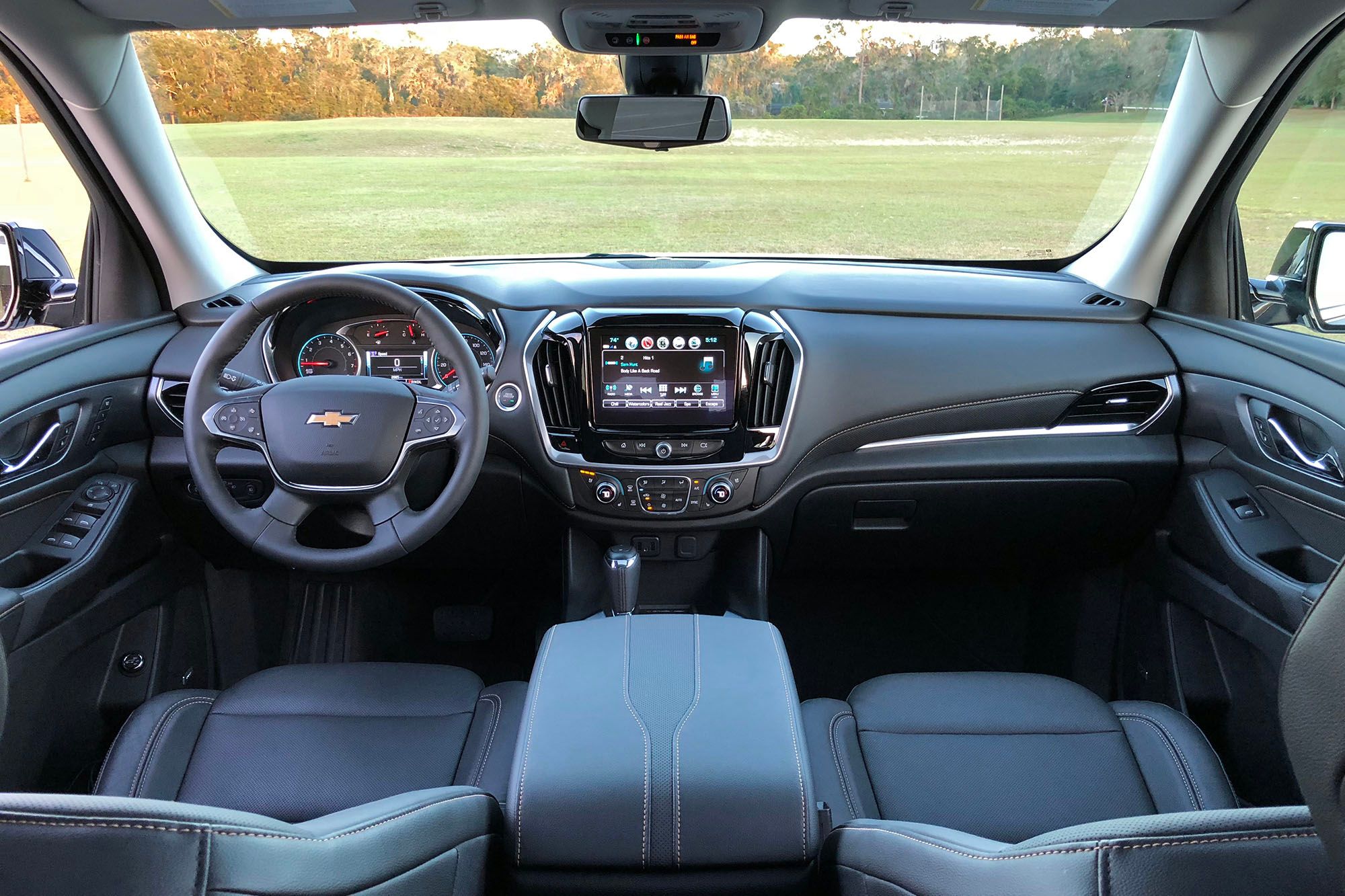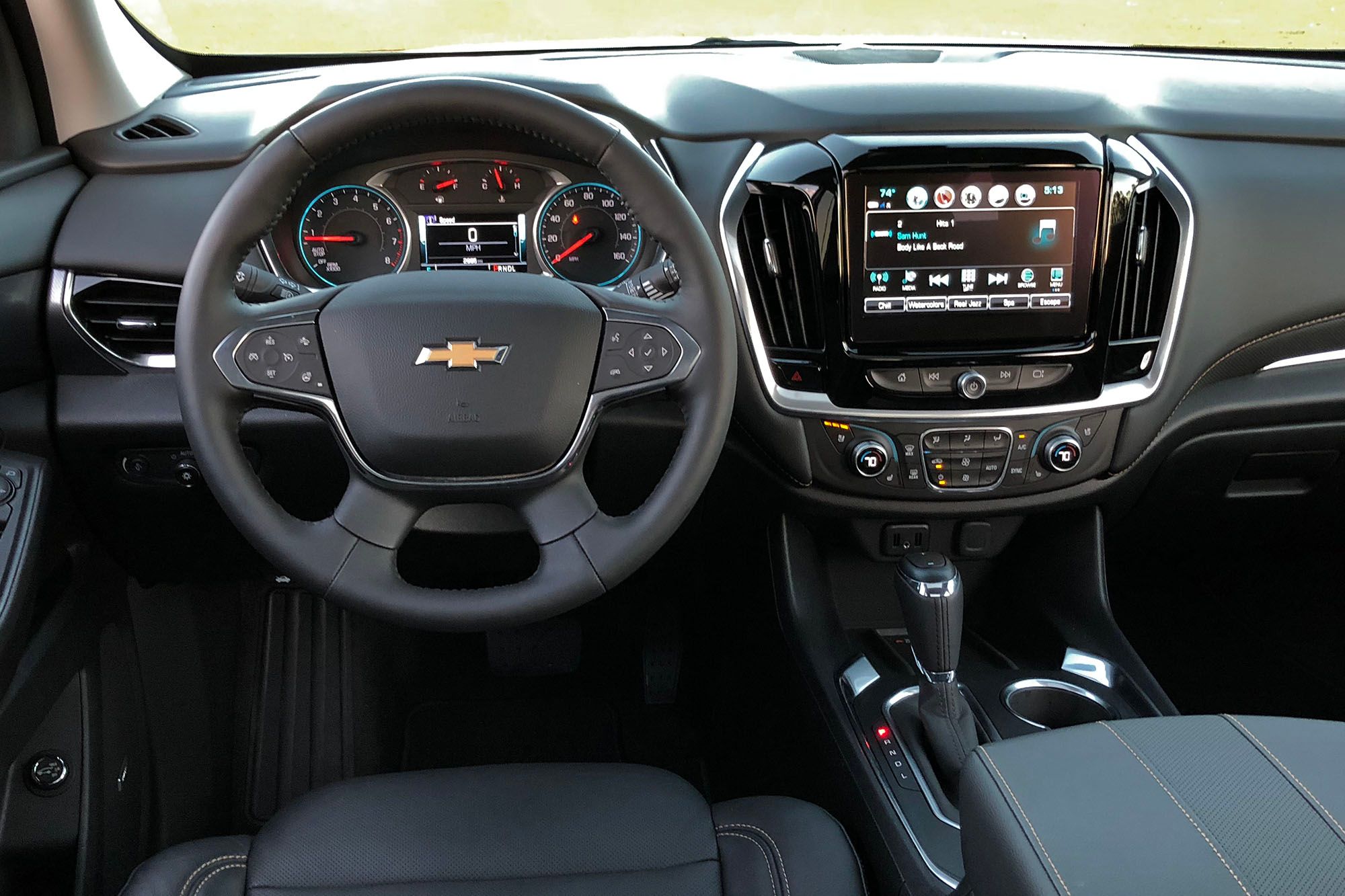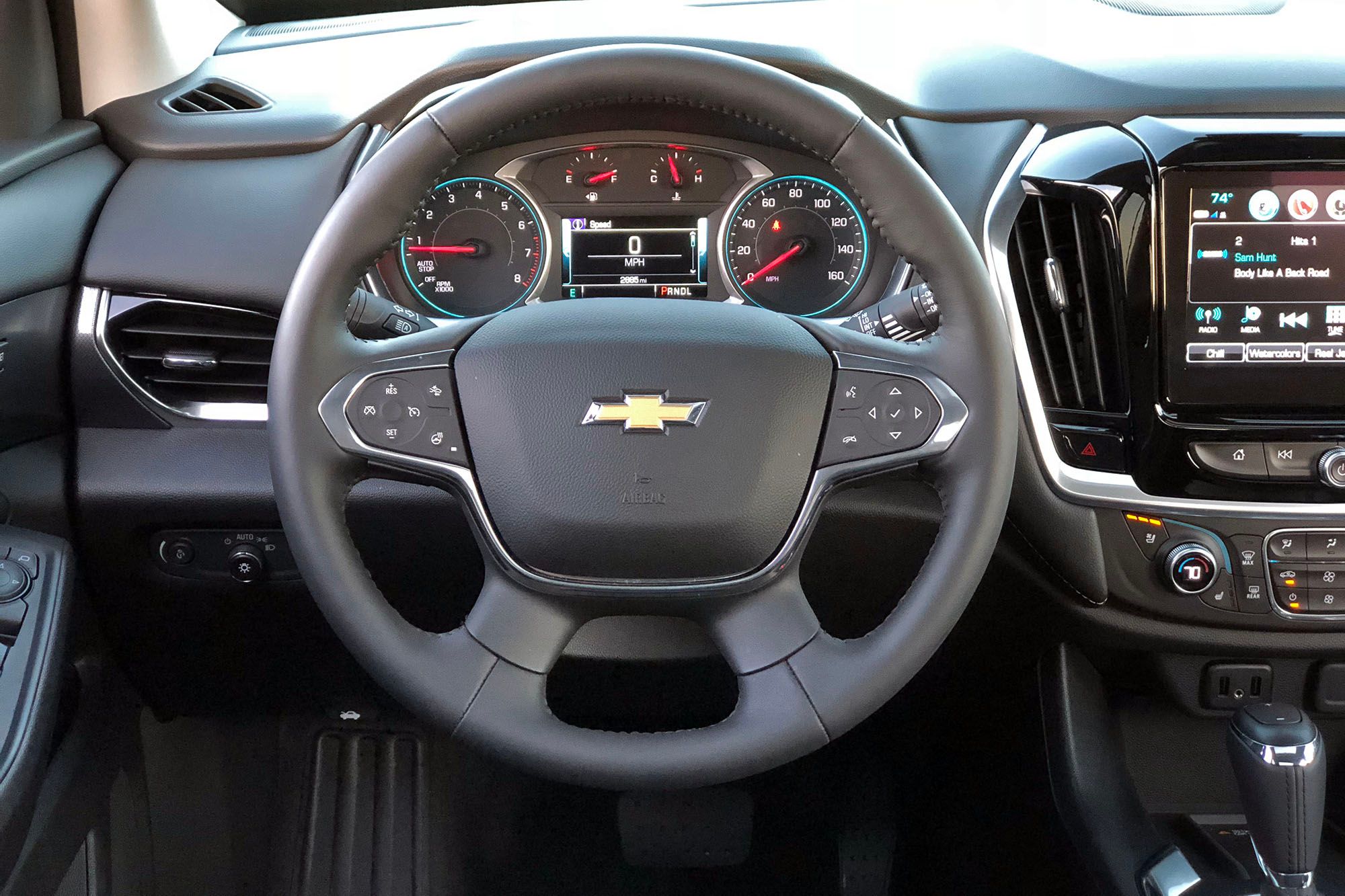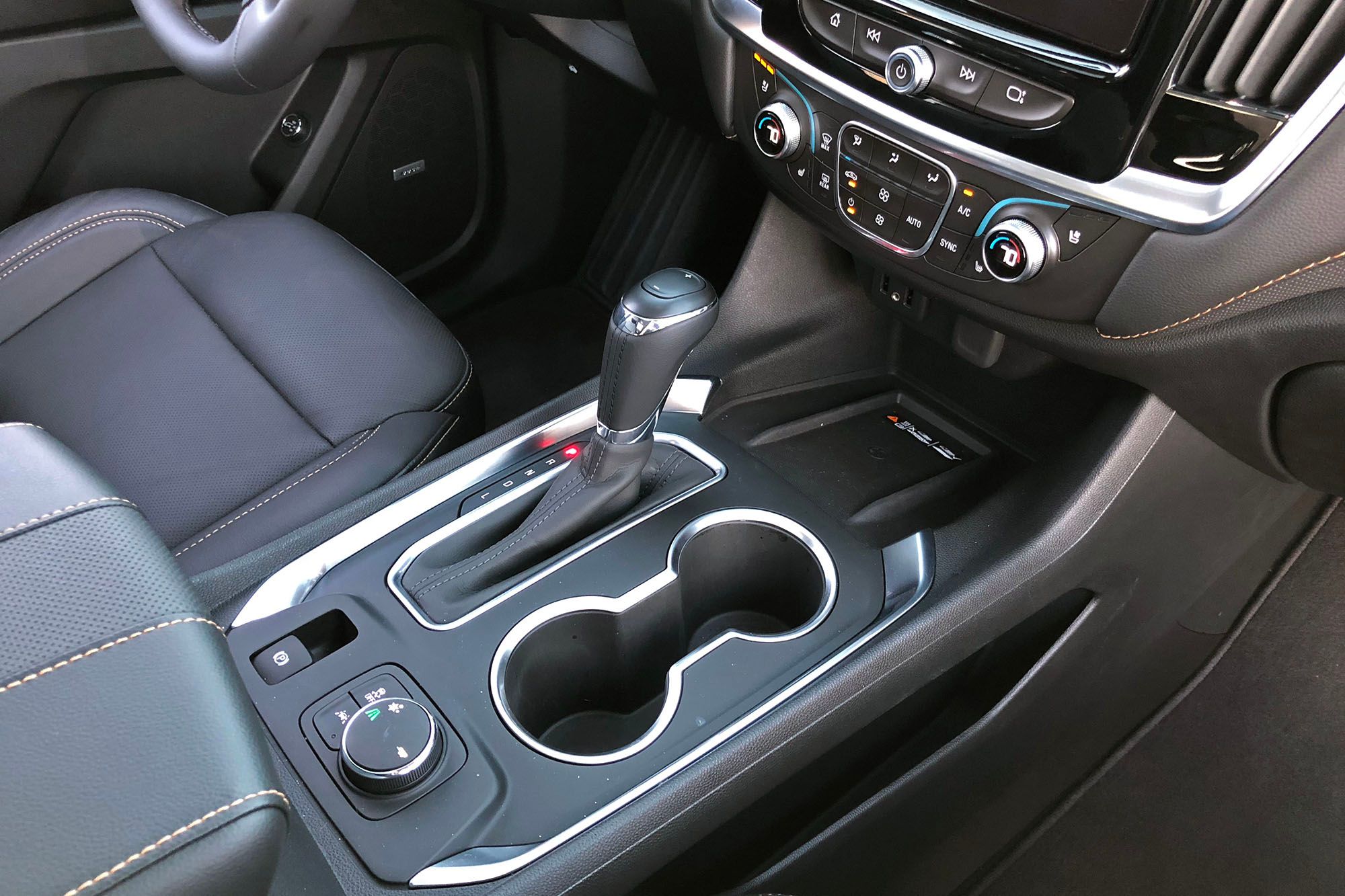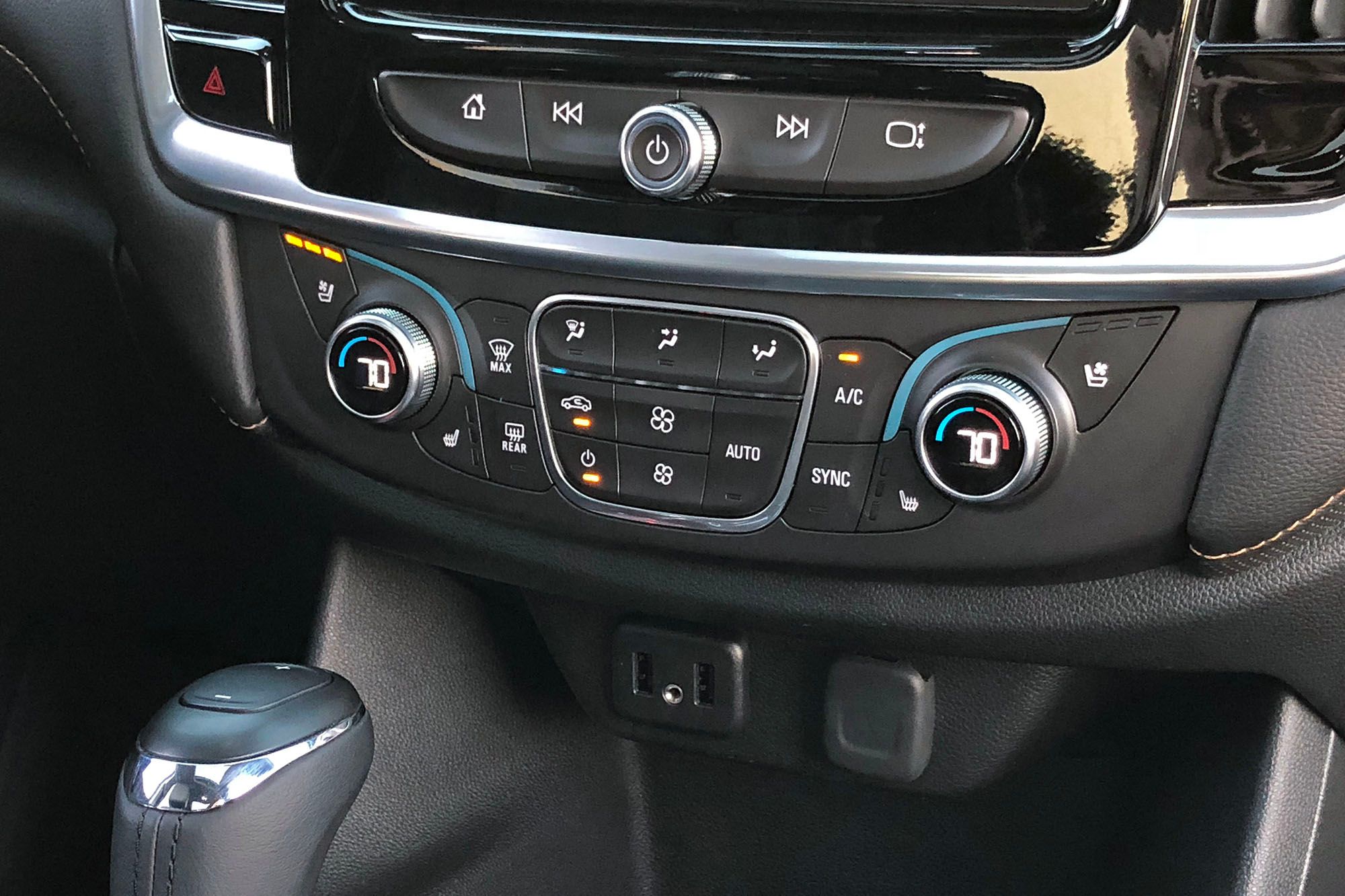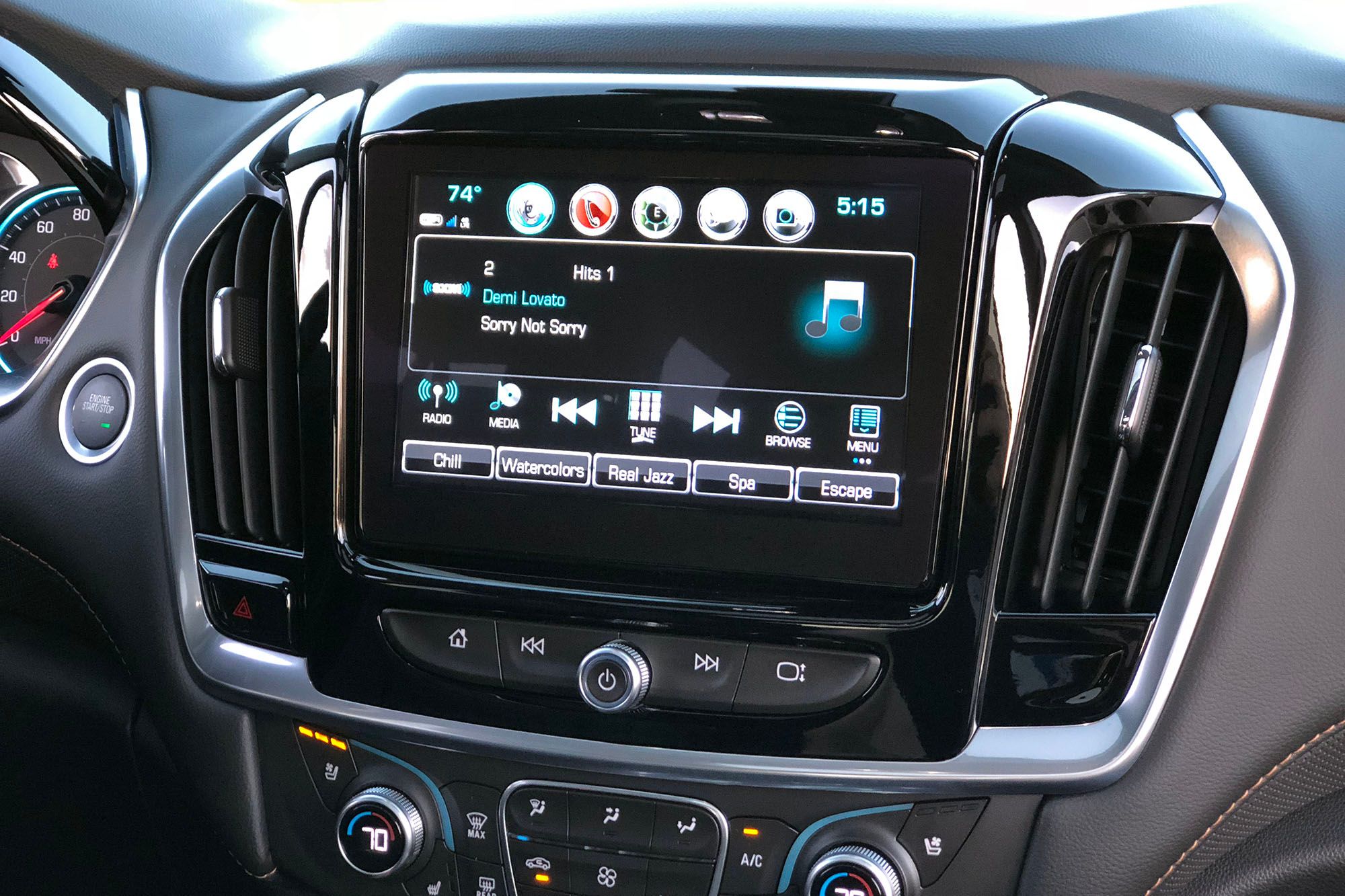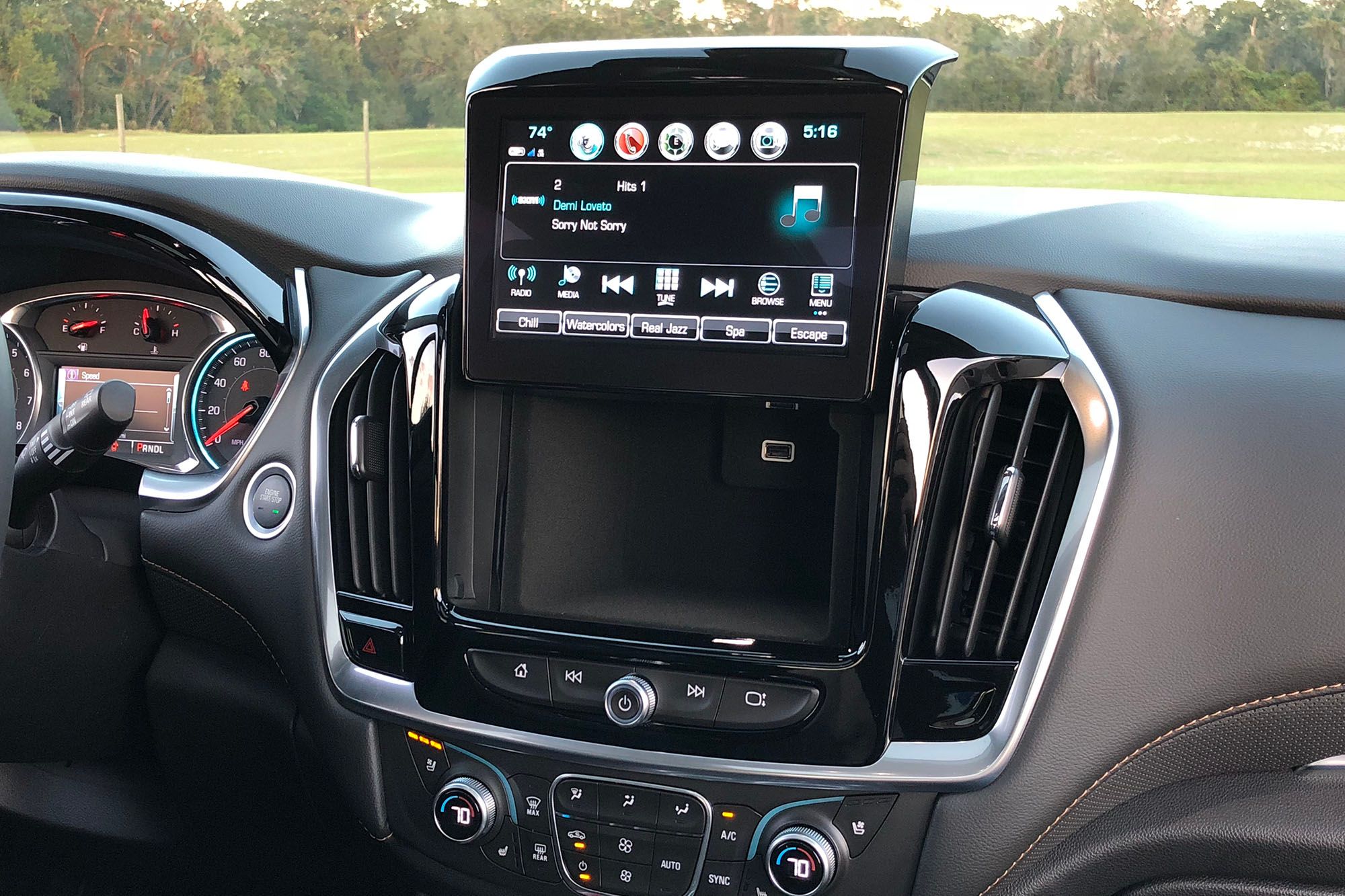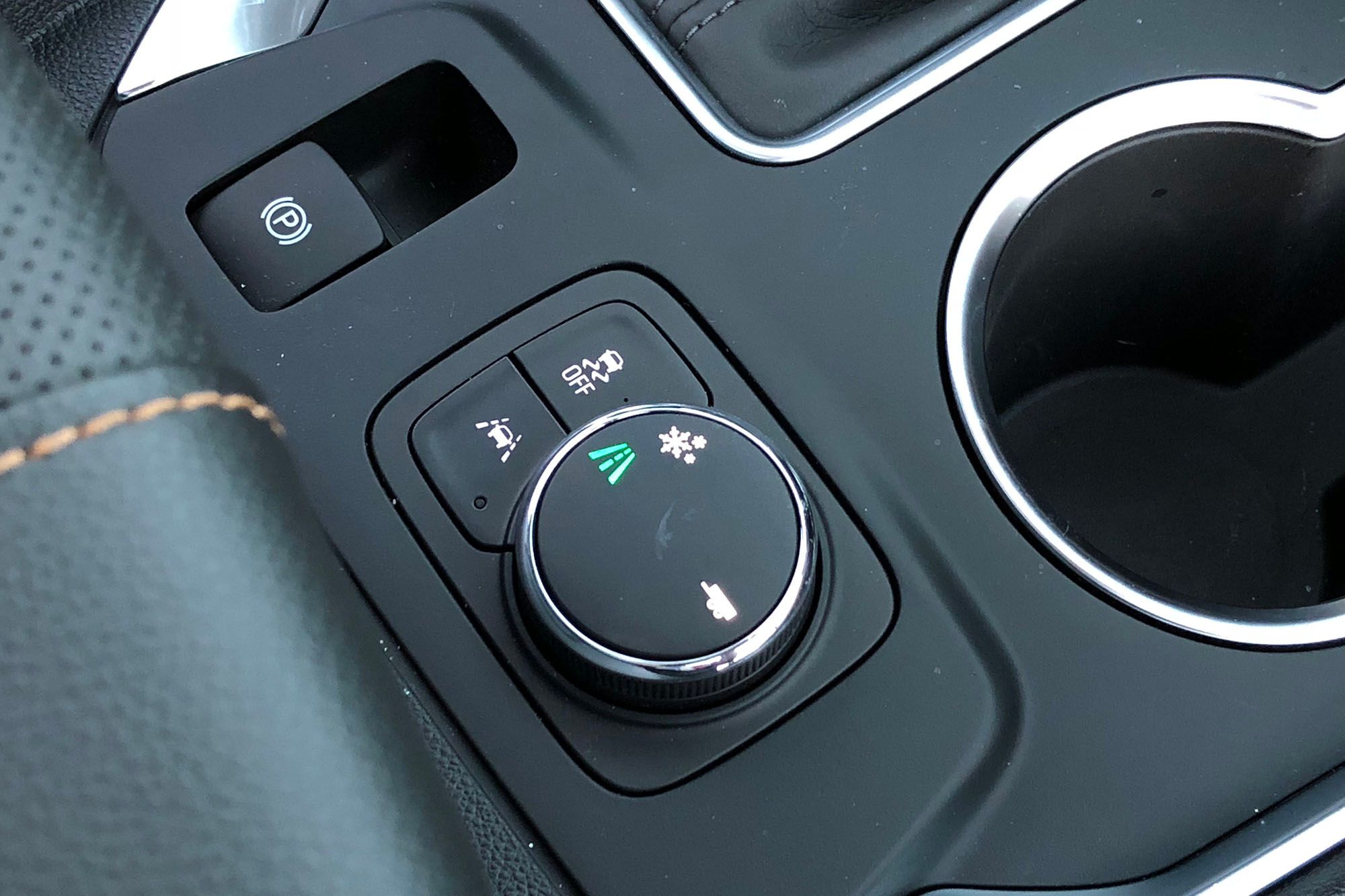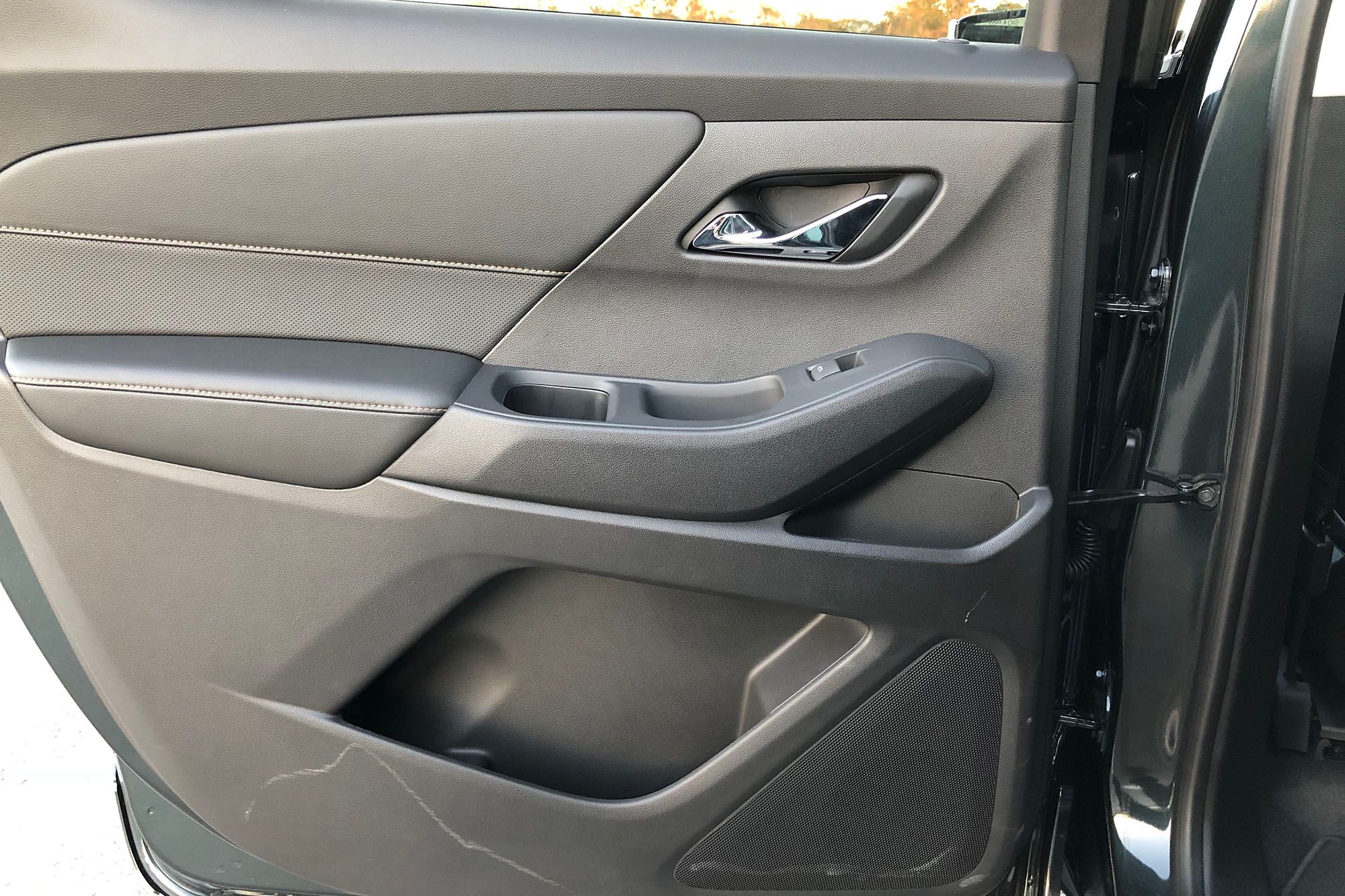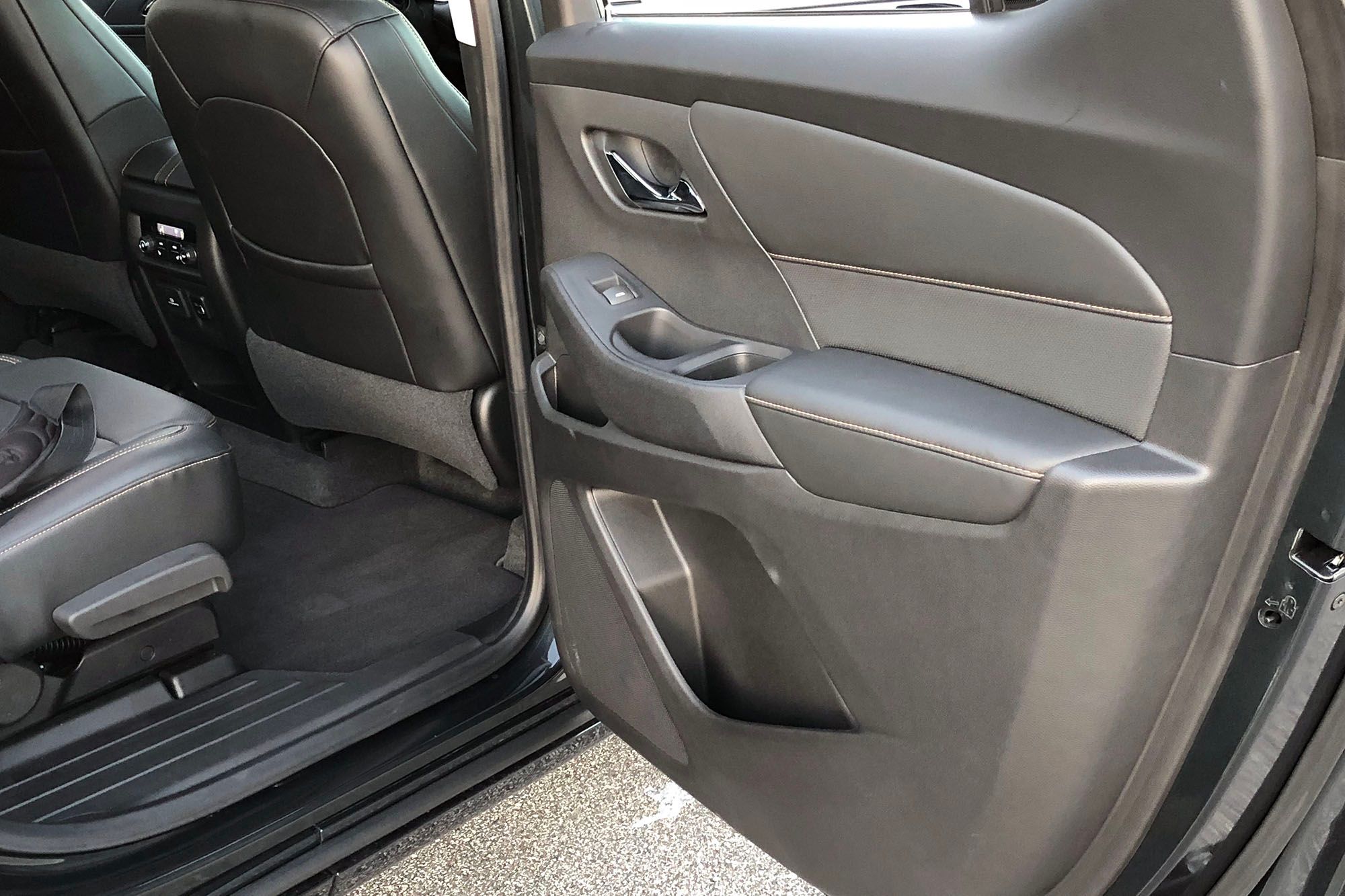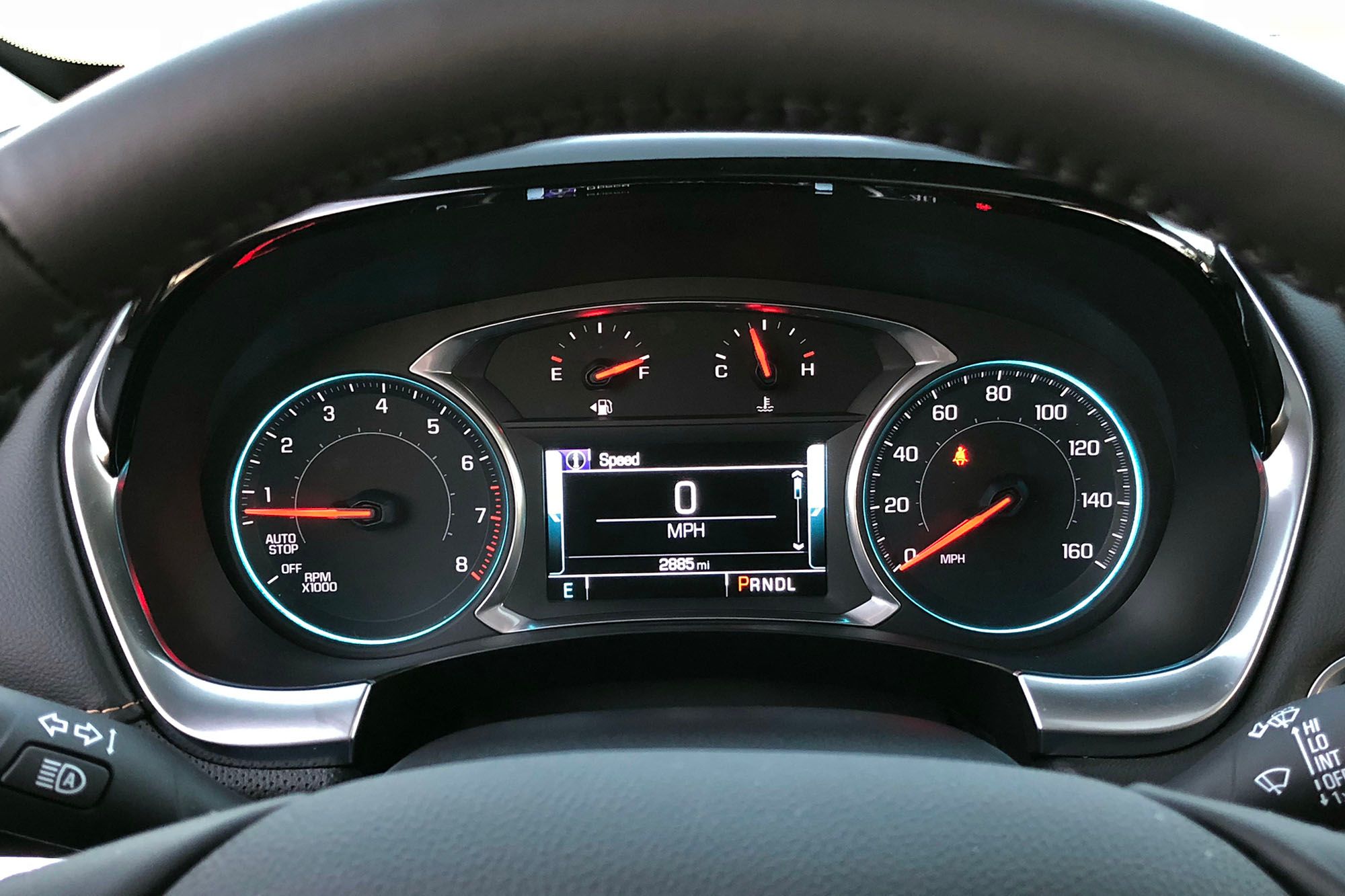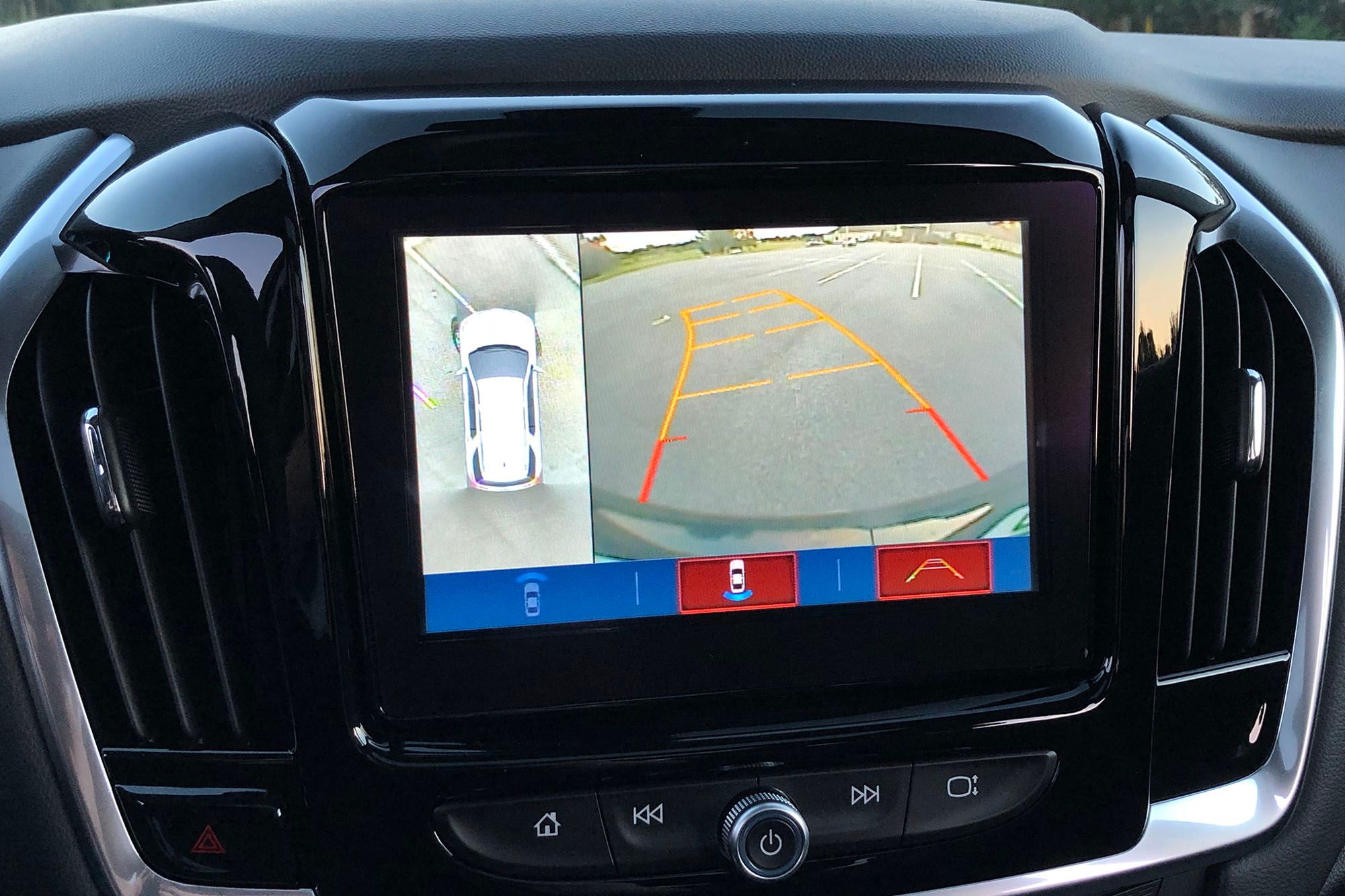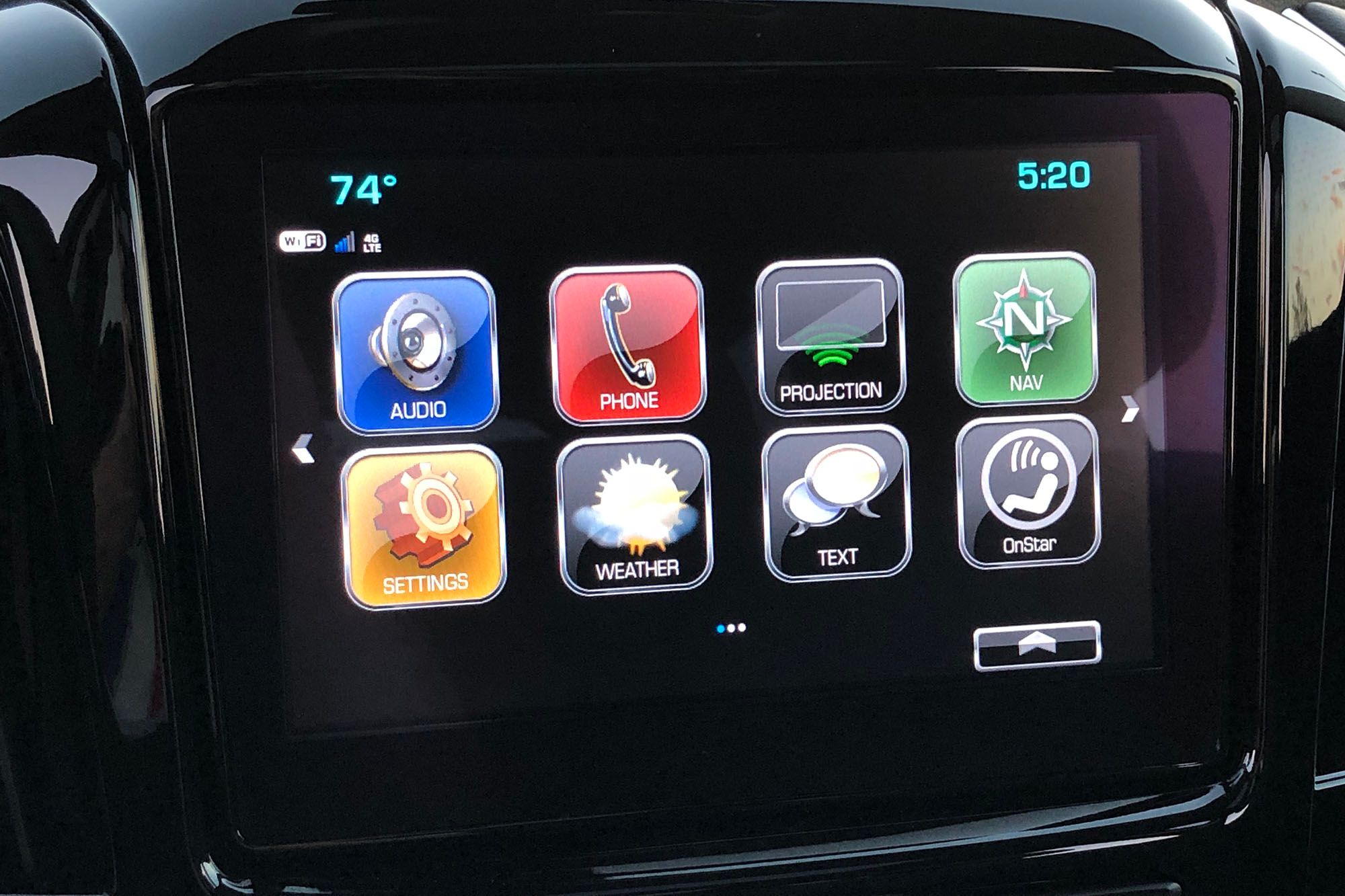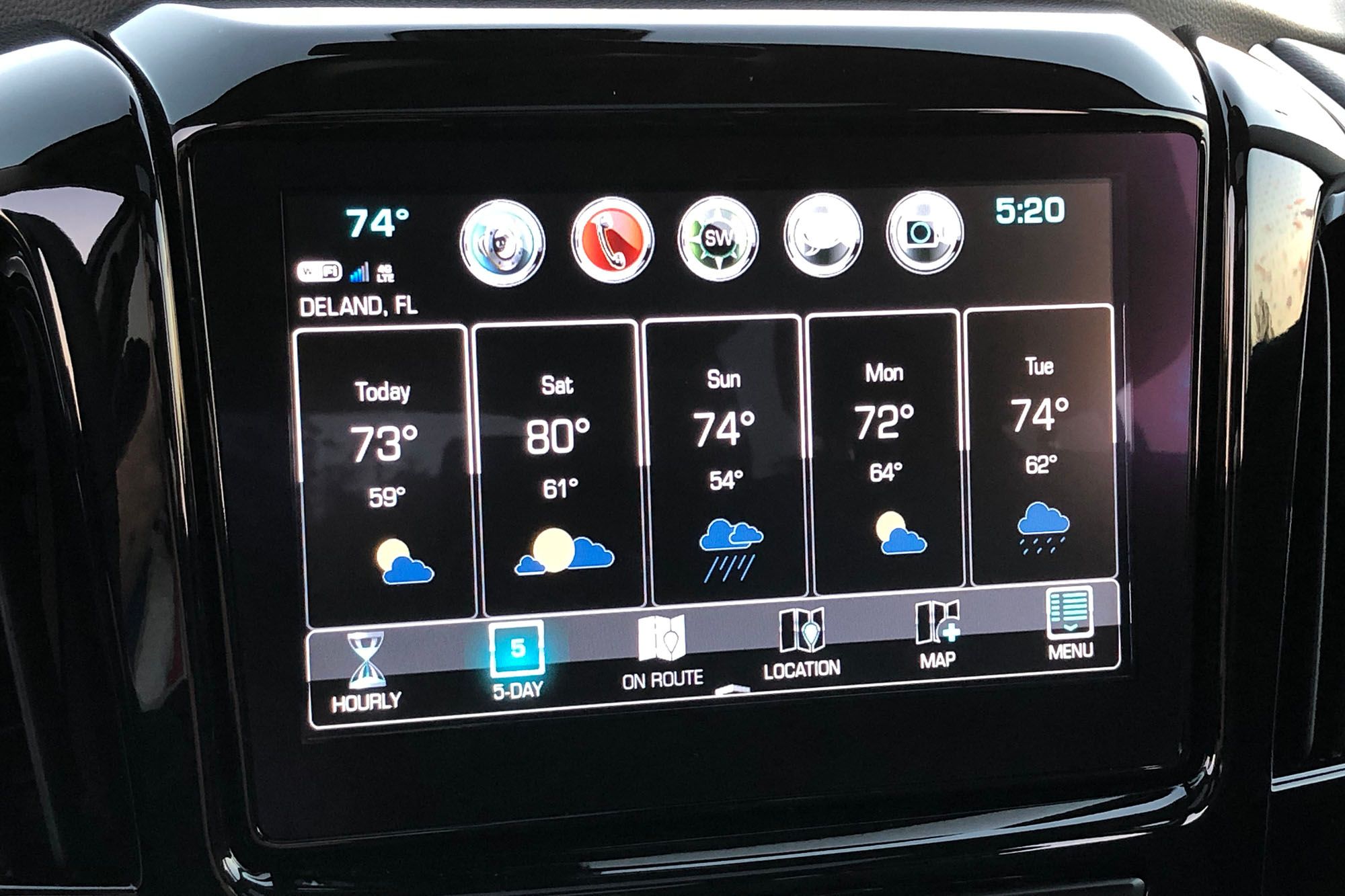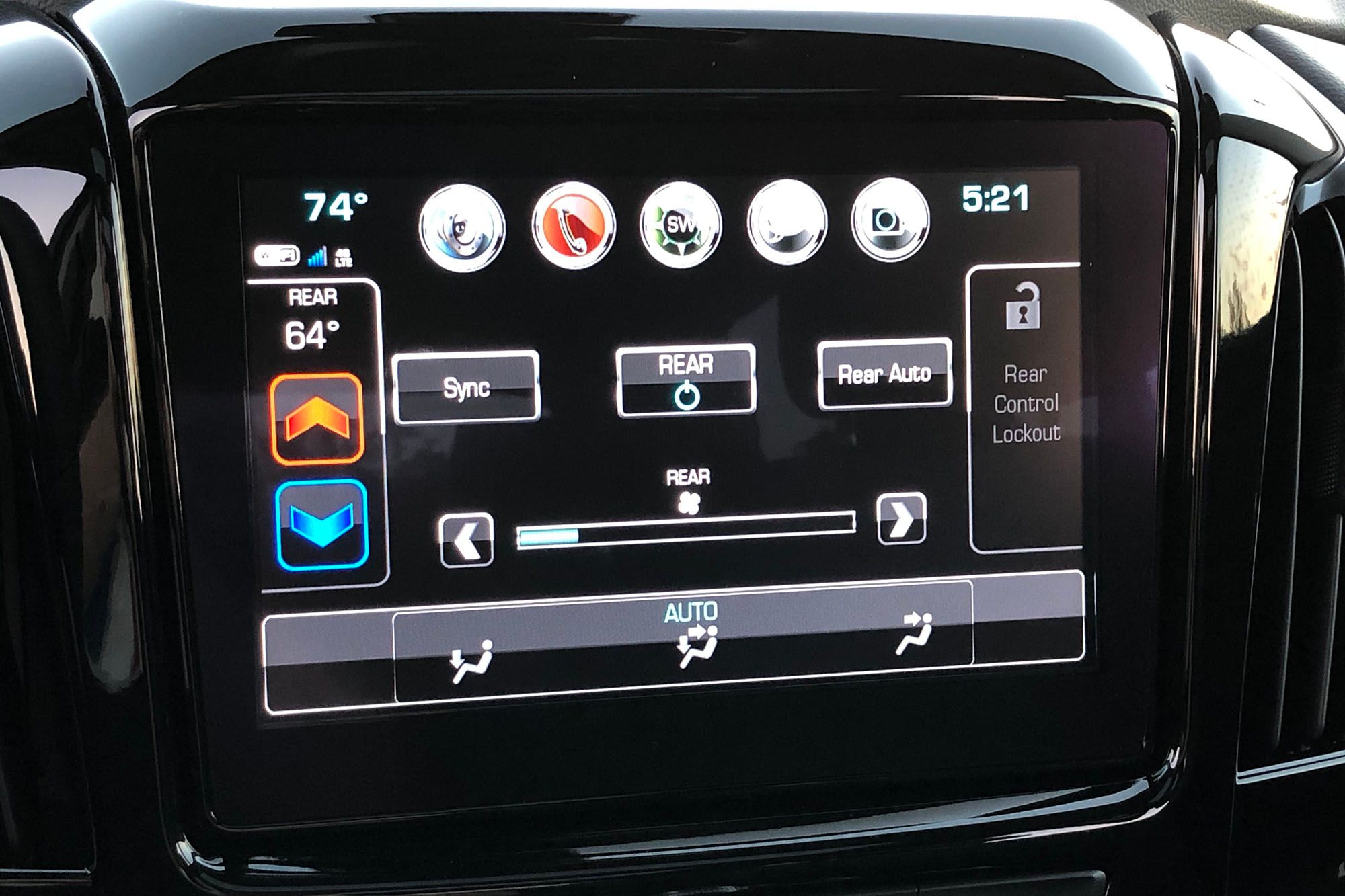The Chevrolet Traverse made a big splash into the three-row crossover pond when it debuted for 2009. It offered more interior room than Chevy’s own Tahoe, and at a much more family-friendly price. The same is true for Chevy’s all-new, second-generation Traverse, which debuts for the 2018 model year. It rides on a new chassis, comes with updated powertrains, and classier styling. Inside is Chevy’s latest tech-filled cabin with plenty of creature comforts spread over three rows and seven seats – or eight seats with the standard second-row bench.
To get an in-depth feel of how Chevy’s redesigned Traverse handled a family road trip, I embarked on a 1,500-mile road trip with my wife, daughter, and sister-in-law all piled aboard. The trip took us from sunny Central Florida to the chilly hills of East Tennessee for Thanksgiving. Our chariot was a Premier trim, second only to the High Country trim in the 2018 Traverse’s lineup. That means it came with just about every wish-list item, including heated and vented front seats, heated second-row bucket seats, the MyLink infotainment system with 4G LTE Wi-Fi, USB ports galore, and Sirius XM radio for uninterrupted music over the day-long, 12-hour drive north. Of course, Apple CarPlay and Bluetooth allowed for other choices for the front-seat DJ.
Continue reading for more on the 2018 Chevrolet Traverse family road trip.
2018 Chevrolet Traverse – Driven
- Make: Array
- Model: 2018 Chevrolet Traverse – Driven
- [do not use] Vehicle Model: Array
Exterior
Chevrolet completely ditched the bubbly styling of the old Traverse and adopted a much more angular, modern appearance for 2018 – much to everyone’s approval. The new Traverse looks far more upscale thanks to its new proportions. It looks far less like a minivan and more like a Tahoe. In fact, much of the Tahoe and Suburban’s styling cues can be seen in the Traverse.
Up front, chrome lines the black grille and accents the fog lights without being too in-your-face about it. Chevy’s new D-Optic headlights come standard on the Premier and High Country. Not only do they look really neat up close, but they do an amazing job at lighting dark country roads. They provide a crisp, white light with very little fall off. The high beams reach noticeably further, too, which is handy when driving through areas known for suicidal deer and skunks.
The 2018 Traverse’s roofline is flatter than the previous model, but outward visibility is still impressive. The tall windshield, thin A-pillars, and big side windows provide a panoramic view for the front seats. Generously sized mirrors and blind spot monitoring made easy work of lane changes. Even better, Chevy’s rear camera mirror provided an unobstructed view free of headrests, luggage, and stretching arms. The depth perception takes some getting used to, but I never found myself turning the camera mirror to its “analog” mirror position.
And thanks to Chevy’s available 360-degree camera system and quick access app on the MyLink screen, a bird’s eye view of the Traverse was just one click away. This made parking much easier, especially in the crowded streets of Gatlinburg.
My Premier model rolled on handsome, 20-inch aluminum wheels with painted pockets and machined faces. Continental Crosscontact LX20 Eco Plus tires provided plenty of grip with no road noise.
On the utility side of things, the Traverse offers an optional trailering package with a two-inch receiver hitch, four- and seven-pin wiring connectors, and an upgraded cooling system for the engine and transmission. Max towing is rated at 5,000 pounds with the V-6. A roof rack offers even more places to put things.
Exterior Dimensions
|
Wheelbase (in./mm) |
120.9/3,071 |
|
Overall Length (in./mm) |
204.3/5,189 |
|
Overall Width (in./mm) |
78.6/1,996 |
|
Overall Height (in./mm) |
70.7/1,795 |
|
Track (in./mm): |
67.3/1,709 (front) |
Interior
The newness doesn’t stop at the Traverse’s doorsills, either. The 2018’s interior is completely reworked and shares no parts with the previous crossover. That means Chevy was able to improve the overall design, the materials, the functionality, and the in-dash technology.
On top of the front seats being incredibly comfortable even after a full day, the middle seats proved to be the spot to be. The bucket seats could be slid rearward, opening up to limo levels of legroom. The seatbacks reclined and folding center armrests kept elbows happy. Heated seat bottoms kept buns toasty on those cold mountain mornings, and the rear HVAC controls allowed for separate adjustments from the front HVAC settings. Vents in the ceiling are well placed, too.
Slide the second row forward maybe five inches, and the third row provides a surprising amount of legroom. That means small kids aren’t the only ones able to ride back there. The 60/40-split bench allowed us to fold the smaller section flat for luggage, leaving the larger section free for the six-year-old to claim the space. Cup holders and UBS ports in the walls kept her iPad charged and her drink held upright throughout the trip. And thank heavens for that 4G LTE Wi-Fi and Netflix.
Getting into the third row is simple, too. There are two ways: the first by simply walking between the second-row bucket seats and the second by tumbling the passenger side second-row seat forward with a single handle. This tumble action even works with a child seat fastened in place, making the Traverse a solid pick for families with more than one LATCH seat in use. Sadly, the driver’s side second-row bucket seat doesn’t have this tumble feature.
Another annoyance is the shiny chrome scattered around the dashboard and center console. Sometimes these pieces will reflect the sun’s glare, even when the sun is high in the sky. More than once I found myself using a napkin to cover the chrome around the gear shifter and cup holders. Beyond that, though, the interior proved incredibly complaint-free. Oh, and owners will have to learn to kick slowly when opening the hands-free tailgate. Do it too fast and it won’t respond. The projected Chevy bowtie does provide a great reference to where to kick, though. The bowtie also garnered a few awe-struck comments from passer-bys in a parking lot one evening.
With the tailgate open, the Traverse shows its cargo-hauling prowess. There’s 23 cubic feet of room behind the third row, 58.1 cubic feet behind the second row, and a whopping 98.2 cubic feet with both rows folded flat. Under the rear load floor lies a large area for more luggage or items like jumper cables, tow straps, and trailer hitches. Under that is the compact spare tire.
Interior dimensions
|
Headroom (in/mm) |
front: 41.3/1,049 (without sunroof) |
|
Legroom (in. / mm) |
front: 41/1,042 |
|
Max Cargo Volume (cu. ft. / L) |
23/651 (behind third row) |
Drivetrain
Powering my 2018 Traverse tester is the latest version of General Motors’ 3.6-liter V-6 making a respectable 310 horsepower and 266 pound-feet of torque. It’s mated to GM’s nine-speed automatic transmission that sends power the front wheels. AWD is available on all but the base L trim and comes standard on the range-topping High Country. The EPA estimates the 2018 Traverse V-6 FWD will get 18 mpg city 27 mpg highway, and 21 mpg combined. I averaged 23.4 mpg over the 1,592 miles driven during my trip. Regular 89-octane is all that’s required.
A small percentage of that efficiently comes from the V-6’s new automatic start/stop system. It works by shutting off the engine when stopped at a red light or in traffic and automatically restarting the engine when the brake pedal is released. While the system is fairly smooth, there is no way to turn it off.
The nine-speed automatic transmission, on the other hand, plays a big part in the Traverse’s efficiency. The gearing is spaced close enough for smooth, seamless shifts yet far enough apart that engine revs are kept as low as possible. Running at 70 mph sees the engine only turning around 1,700 rpm.
As for power, 310 horses is more than enough for moving the Traverse. Interstate on-ramps and passing on two-lane roads is done with ease thanks to the V-6’s variable valve timing and direct fuel injection making the most from the 3.6 liters.
Drivetrain Specifications
|
Engine |
3.6L DOHC direct injection |
2.0L turbo DOHC DI |
|
Bore & stroke (in / mm) |
3.74 x 3.37 / 95 x 85.8 |
3.39 x 3.39 / 86 x 86 |
|
Block material |
Cast aluminum w/ cast-in-place iron bore liners |
Cast aluminum w/ cast-in-place iron bore liners |
|
Cylinder head material |
Cast aluminum |
Cast aluminum |
|
Valvetrain |
Dual-overhead camshafts, four valves per cylinder, continuous variable valve timing |
Dual-overhead camshafts, four valves per cylinder, continuous variable valve timing |
|
Fuel delivery |
Direct, high-pressure fuel injection with electronic throttle control |
Direct, high-pressure fuel injection with electronic throttle control |
|
Horsepower |
310 HP @ 6,800 RPM |
255 HP @ 5,500 RPM |
|
Torque |
266 LB-FT @ 2,800 RPM |
295 LB-FT @ 3,000 RPM |
|
Transmission |
Hydra-Matic 9T65 nine-speed automatic |
Hydra-Matic 9T65 nine-speed automatic |
Behind the Wheel
On top of the Traverse’s adequate power, the crossover proved surprisingly spry to drive. The steering felt tight with almost no on-center play, the suspension soaked up bumps like a champ without feeling too squishy or allowing too much body roll, and the cabin remained library quiet regardless of speed or road surface.
As mentioned, outward visibility is very good thanks to the large side mirrors and rear mirror camera system. Ergonomics are impressive thanks to an eight-way power driver’s seat and power-adjustable steering column. Memory settings allowed me to keep my favorite seating position, too. Despite its length, the Traverse feels comfortable navigating through tight city streets.
My tester came with the $475 Driver Confidence II Package, which brought the following distance indicator light in the gauge cluster, forward collision alert, lane keep assist with lane departure warning, low speed forward auto braking, pedestrian braking, and the IntelliBeam auto high beam headlights. These features really helped with long-distance comfort, though adaptive cruise control was missed. Only the High Country offers that feature.
All told, the 2018 Traverse is surprisingly rewarding to drive for being a three-row crossover. Its ridged new chassis, four-wheel independent suspension, grippy tires, and well-sorted steering combine to make a very willing road tripper. It proved completely comfortable over a full day of driving thanks to its spacious interior, comfortable seats, quiet cabin, and entertainment options like 4G LTE Wi-Fi, Apple CarPlay, and SiriusXM radio.
Pricing
The 2018 Chevrolet Traverse has a wide range of trims with an equally wide price range. The base L trim with zero options starts at $30,925. Good luck finding that version outside the airport rental car agencies’ fencing, though. Most folks will go for the LS starting at $33,045, the LT with cloth for $35,545, the LT with leather for $42,145, or the RS with the new 2.0-liter turbocharged four-cylinder and all the features of the LT with leather for $43,045. The High Country is the range-topping trim and comes standard with just about every feature for $53,045, but the Premier (like my tester) offers tons of features while leaving a few of the more expensive features as optional add-ons for $45,445. In my book, the Premier offers the best bang for the buck.
My Premier tester came with a few options that gave it a more upscale feel but added $2,565 to the price. These include the $1,400 Dual Skyscape Sunroof, the $650 trailering package, and the $475 Driver Confidence II Package. Add on the $945 destination fee, and the total price came to $47,960.
Competition
Dodge Durango
The Durango has been around a while, so the Chevy certainly has the newness factor on lock. Still, the Durango offers a ton of interior room and comfort, three available engines (two of which are Hemi V-8s!) the popular Uconnect infotainment system, standard rear-wheel drive, and a tow rating ranging from 6,200 pounds to 8,700 pounds. The Durango will hold seven people in a 2+3+2 configuration or six with the optional second-row bucket seats. Fold the seats down and the Durango will swallow 84.5 cubic feet of luggage.
As far as those engine options go, the standard mill is the familiar 3.6-liter Pentastar V-6 with 295 horsepower and 260 pound-feet of torque. The optional 5.7-liter Hemi offers a respectable 360 horsepower and 390 pound-feet of torque. They can be had with either RWD or AWD. But for those needing something more powerful, Dodge offers the Durango SRT with the monstrous 6.4-liter Hemi V-8 making 475 horsepower and 470 pound-feet of torque. The SRT is only offered in AWD and all versions of the Durango come with an eight-speed automatic transmission.
Pricing for the 2017 Dodge Durango starts at $29,995 for the base SXT model. The SXT Plus adds more features at $32,195 and the GT brings mid-level luxury at $37,495. The Citadel is the range-topping luxury choice at $41,395 and adding the Anodized Platinum package brings the price to $45,090. The sporty R/T with the 5.7-liter starts at $42,095. Those wanting the powerful SRT will have to shell out $62,995.
Read our full review on the 2018 Dodge Durango.
Volkswagen Atlas
Debuting for the first time is the new 2018 Volkswagen Atlas – the automaker’s first three-row crossover designed for U.S. customers in mind. The Atlas undercuts the Touareg is pricing while offering far more interior functionality. The Atlas rides on VW’s familiar MQB platform and orients its engine to power the front wheels like the Traverse. AWD is optional, too. And like the Traverse, its interior space is cavernous. There is 21 cubic feet behind the third row, 56 behind the second row, and a total of 97 cubic feet behind the first row.
Standard power comes from 2.0-liter turbocharged four-cylinder with 235 horsepower and 258 pound-feet of torque when fed premium gasoline. The optional 3.6-liter V-6 brings 276 horsepower and 266 pound-feet of torque and only requires regular fuel. As for fuel economy, the 2.0-liter offers an impressive 22 mpg city and 26 mpg highway while the 3.6-liter manages only 18 mpg city and 25 mpg highway.
Pricing is separated between the 2.0-liter and 3.6-liter with the four-cylinder starting at $30,500 for the base S trim. The other trims include the SE, SE w/ Technology, and SEL. The V-6 starts at $31,900 and grows up to $48,490 for the range-topping SEL Premium w/ 4Motion AWD.
Read our full review on the 2018 Volkswagen Atlas
Conclusion
Crossovers and SUVs are all the rage these days – and for good reason. They are very functional, comfortable, and are getting better fuel economy than ever before. Sure, they’re not a sexy as a two-seat roadster or a 700-horsepower muscle car, but their purposeful carryall design makes them irresistible.
I’ve driven nearly every crossover and SUV currently available and can vouch for Chevy’s improvements on the 2018 Traverse. The composed, quiet ride matched with the spacious interior and wrapped in its handsome styling make it a very strong competitor in a field of worthy advisories.
References
Chevrolet Traverse
Read our full review on the 2018 Chevrolet Traverse.
Read more Chevrolet news.

